Eero Saarinen & Associates
TWA Flight Center
1955–1962
While New York International Airport at Idlewild had been operating since 1939, the need and site for a Trans World Airlines (TWA) terminal was laid out in a 1955 plan in which each major airline would build its own terminal, while smaller airlines would be served from an International Arrivals Building. TWA had begun flying internationally in 1946 from New York’s LaGuardia Airport with flights to Paris, London, Rome, Athens, Cairo, Lisbon and Madrid. In 1950, as both a domestic and international carrier, the former Transcontinental and Western Airlines changed its name to Trans World Airways. By 1955, TWA, being among New York’s major airlines, undertook to build its own terminal at what was then commonly called Idlewild Airport.
After the opening of the International Arrivals Building in 1957, the major US airlines each built their own terminals at Idlewild. United Airlines and Eastern Air Lines opened their own terminals in 1959, followed by American Airlines and Pan American World Airways (Worldport) in 1960, Northwest Airlines and TWA in 1962. The National Airlines Sundrome would be last, in 1969.
Eero Saarinen and his Detroit-based firm were commissioned in 1955 to design the TWA Flight Center. Saarinen, who projected a high patronage for the terminal, conceived the terminal to speed up processes. At the same time, the bird-shaped, emblematic construction featured a harmoniously coordinated interior and references to TWA’s corporate identity and thus served to convey the company’s image. Saarinen planned the appearance of the building from a purely formal perspective mainly to exploit market opportunities. Thus, the TWA Terminal represents an entirely different approach than the thin concrete shells constructed at the same time. The terminal was built to span a space with a minimum of material. Saarinen, who was known as an indefatigable architect, indicated to his client that he needed more time, then took another year to resolve the design. The airline, with the support of Saarinen’s wife Aline, exploited the new market opportunity to carry out a most successful marketing campaign starting with the building’s first public presentation on November 12, 1957.
The terminal is a pioneering example of thin-shell construction, consisting of a reinforced concrete shell supported at the corners. To engineer the roof, Saarinen collaborated with Charles S. Whitney and Boyd G. Anderson of the firm Ammann & Whitney. Saarinen had worked with the same team in 1953 to 1955 in executing the Kresge Auditorium and would work with them on the main terminal at Dulles International Airport.
From the Saarinen office, Kevin Roche, Cesar Pelli, Norman Pettula, and Edward Saad were key collaborators. Warren Platner was largely responsible for the interiors. When Saarinen died unexpectedly of a brain tumor in 1961, Kevin Roche and John Dinkeloo led the realization of New York’s TWA Terminal.
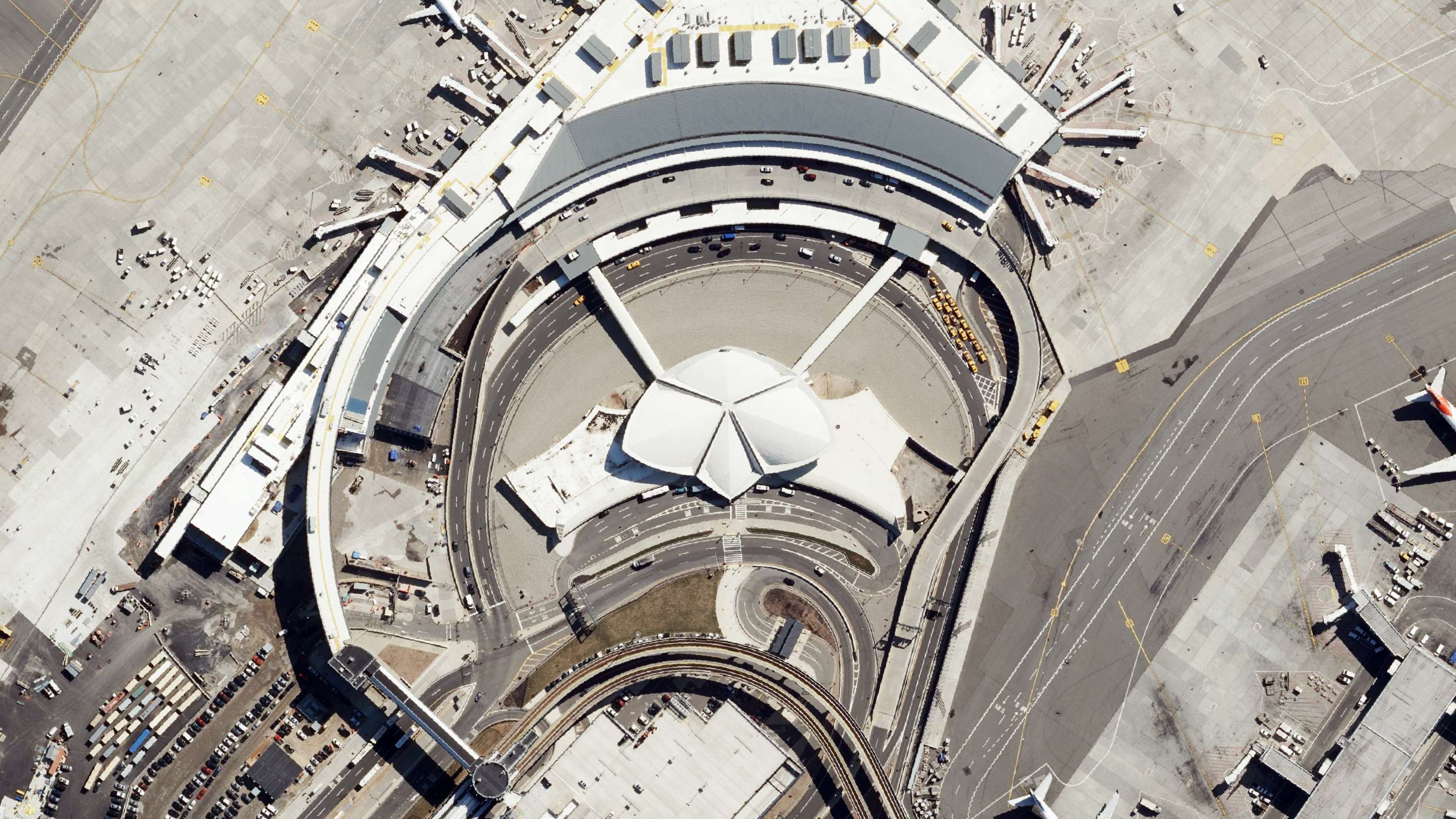
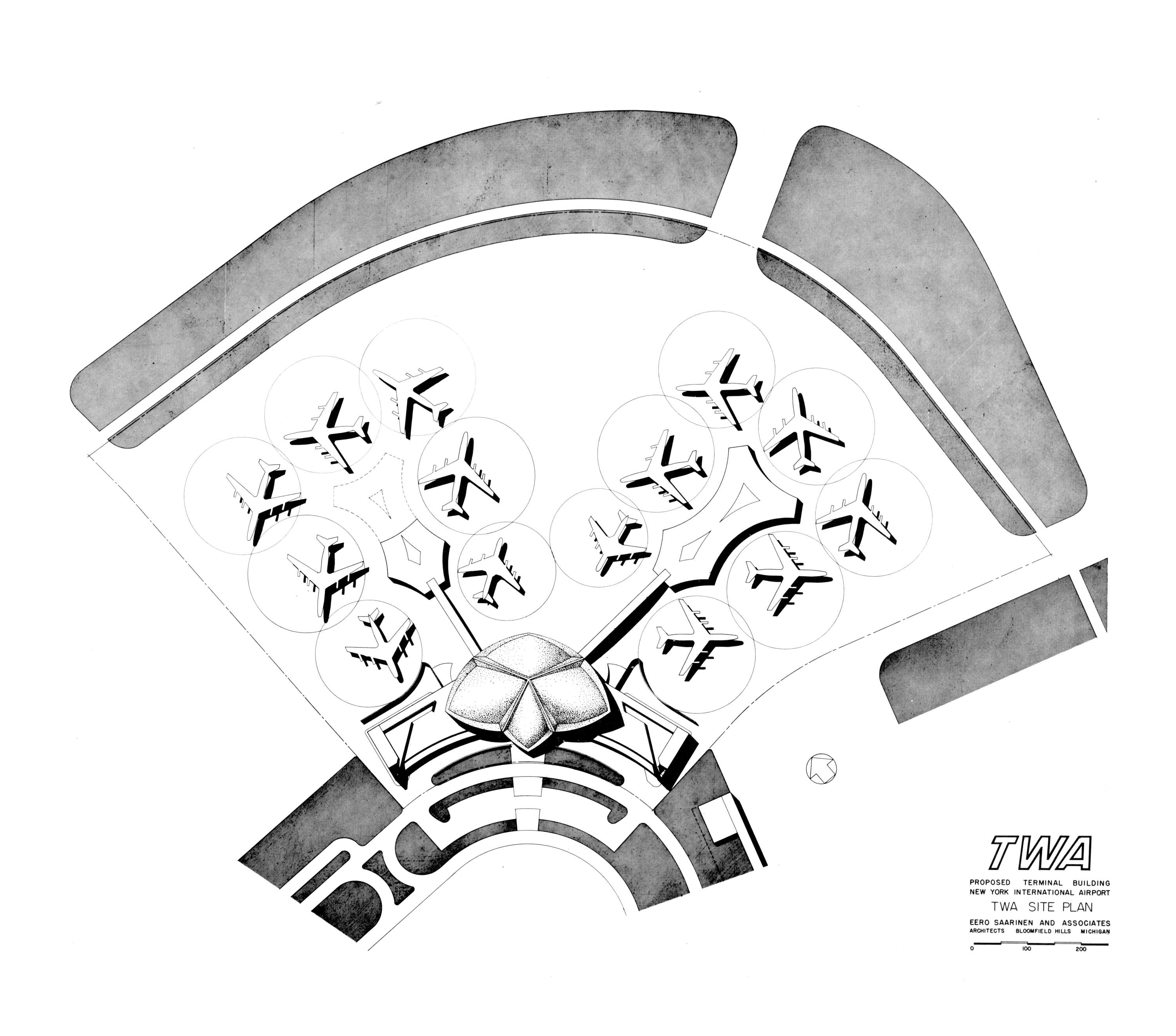
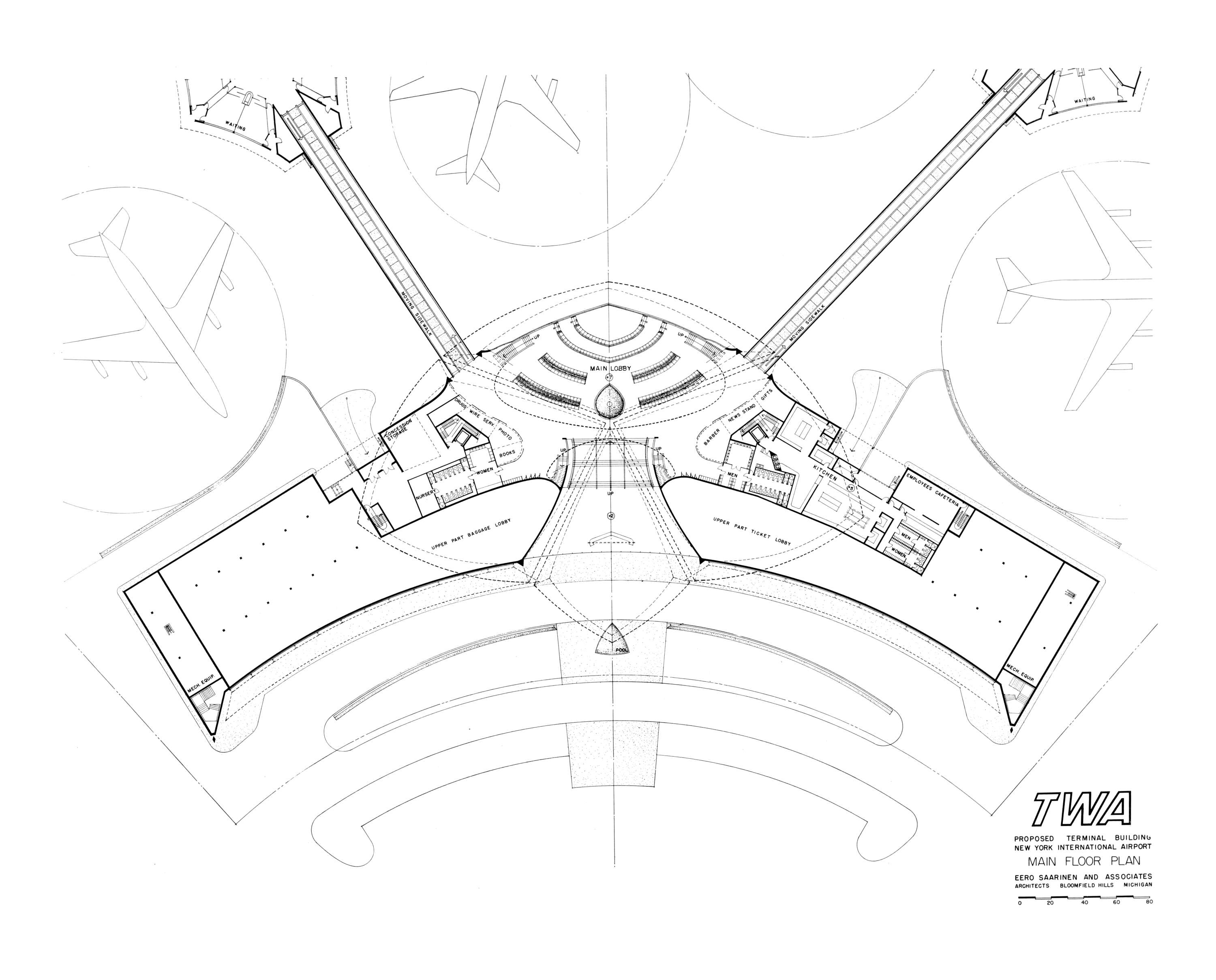
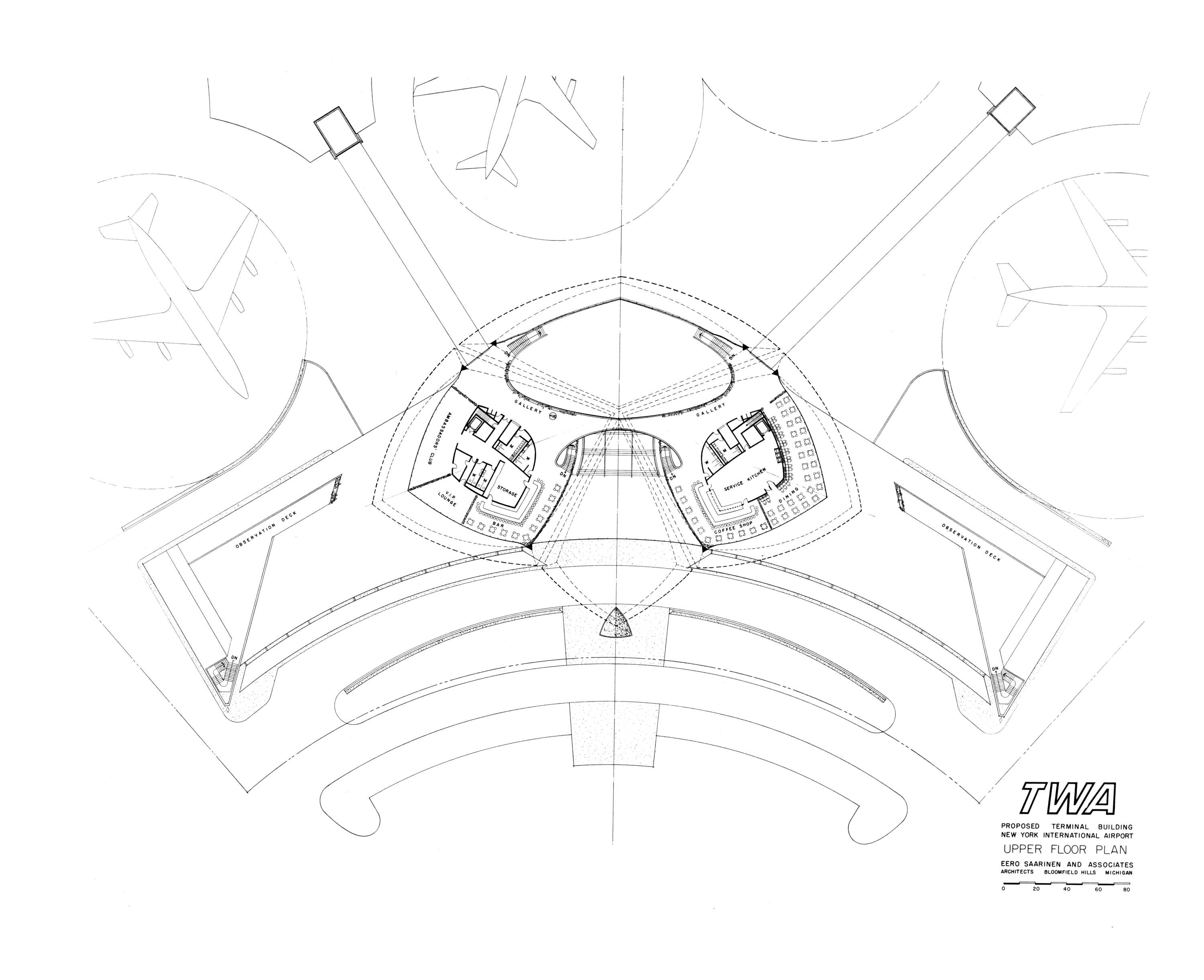
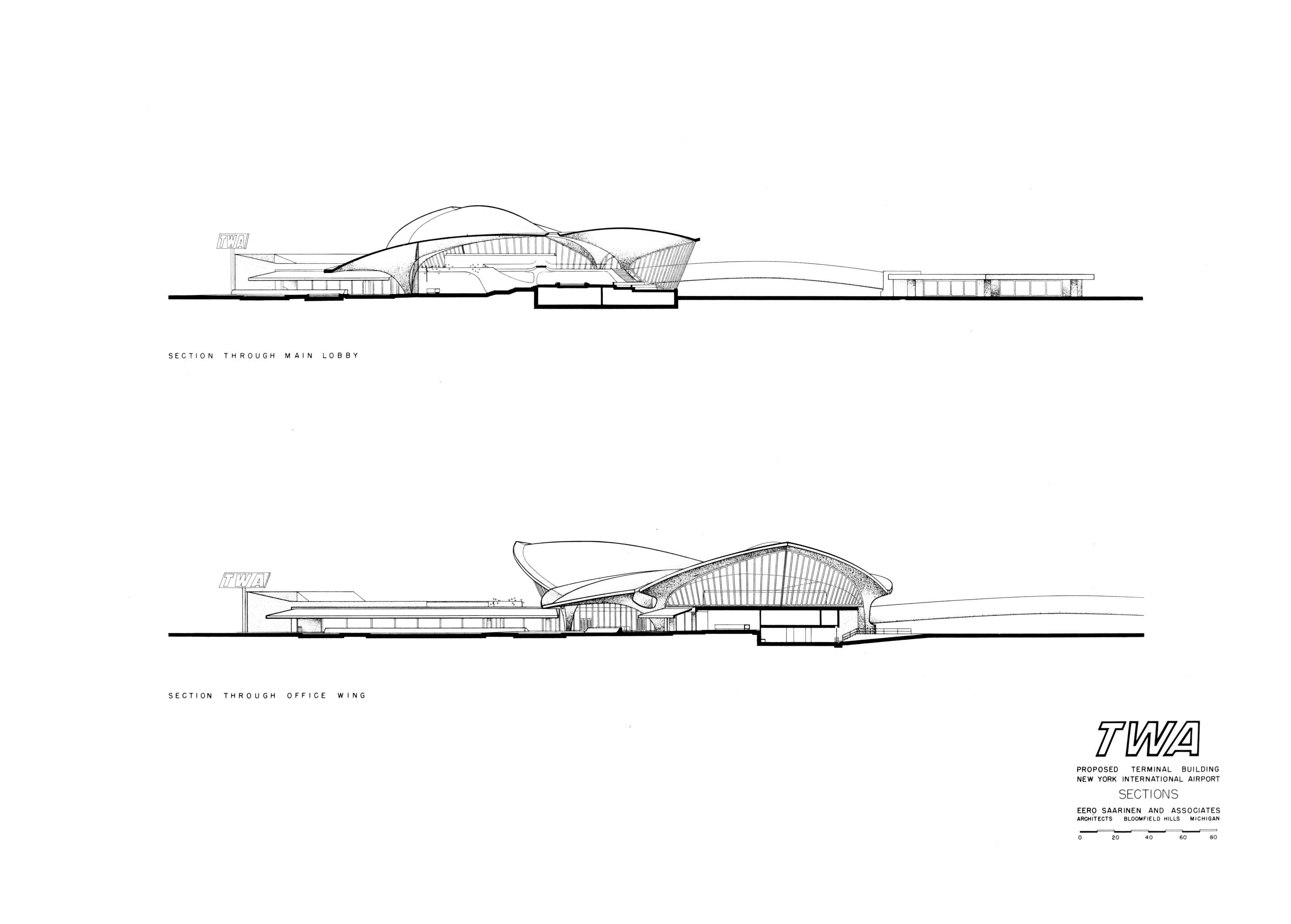
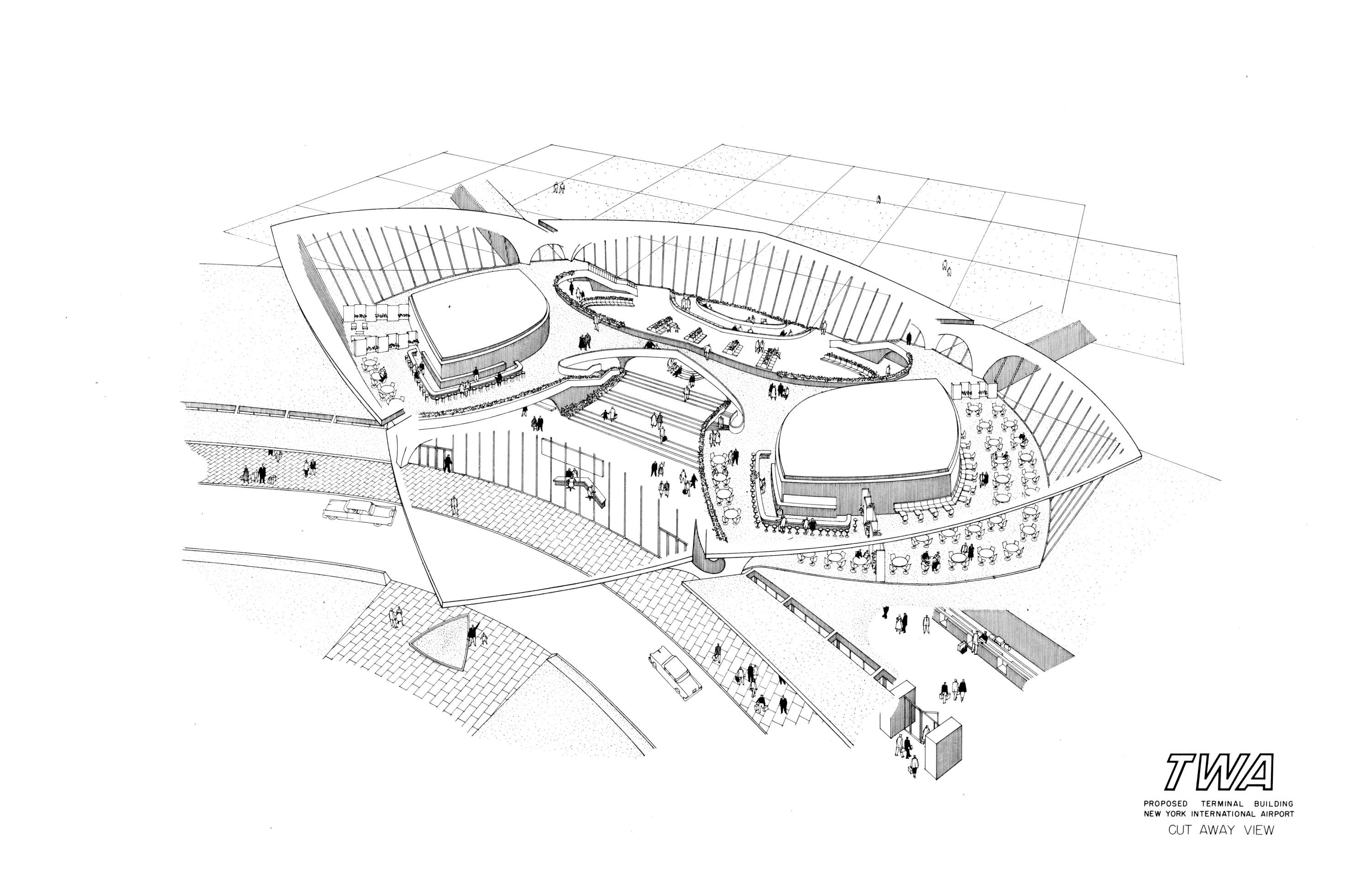
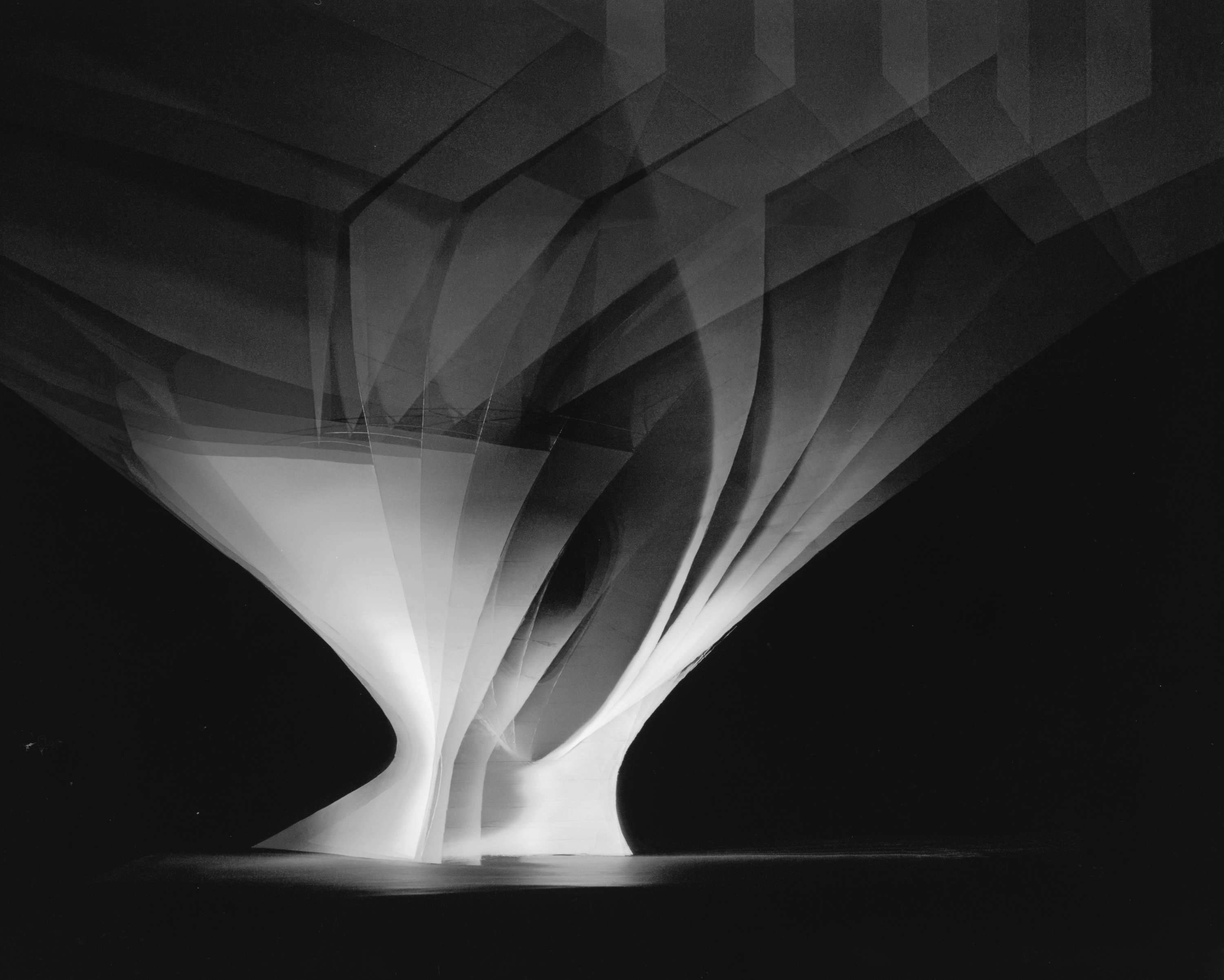

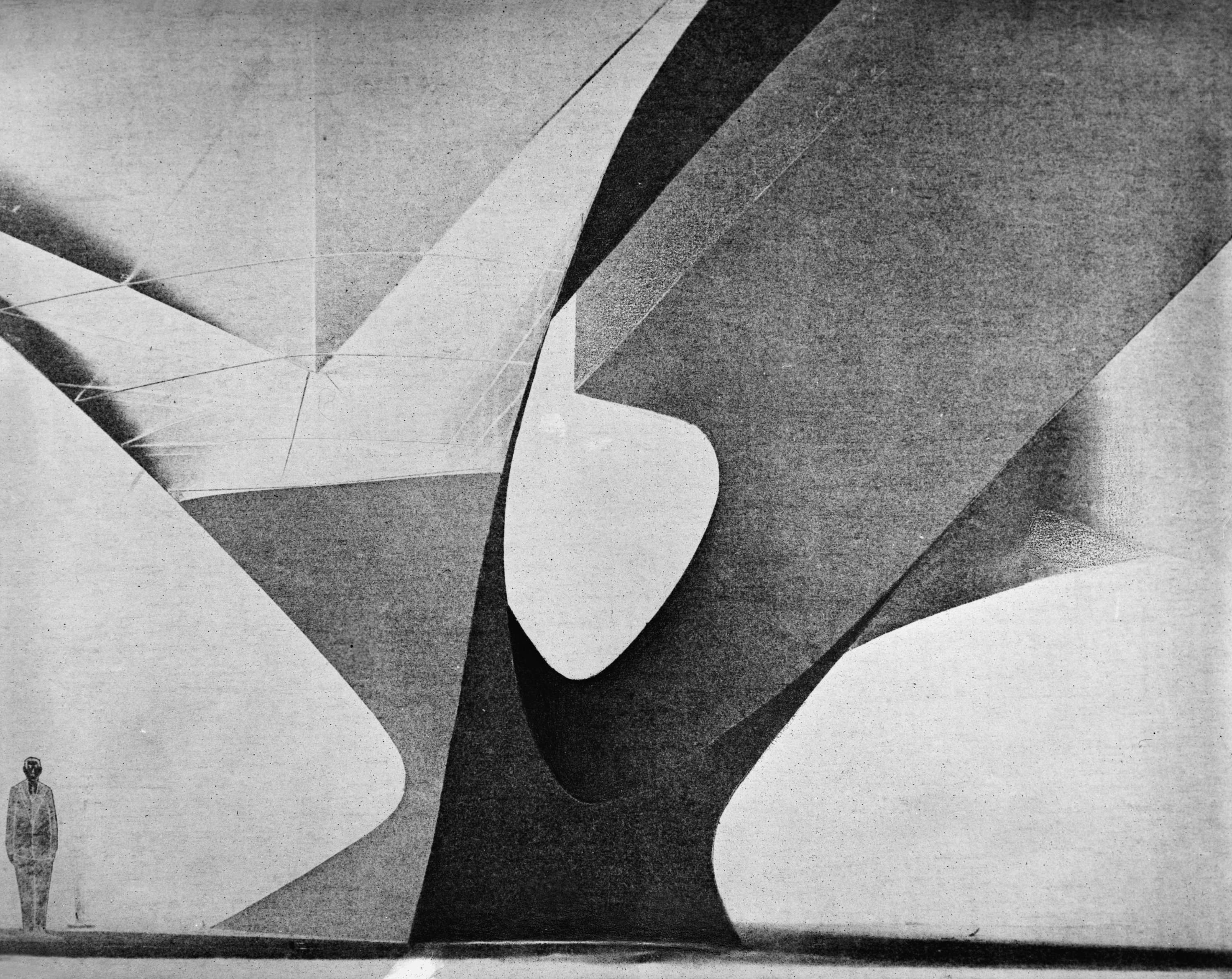
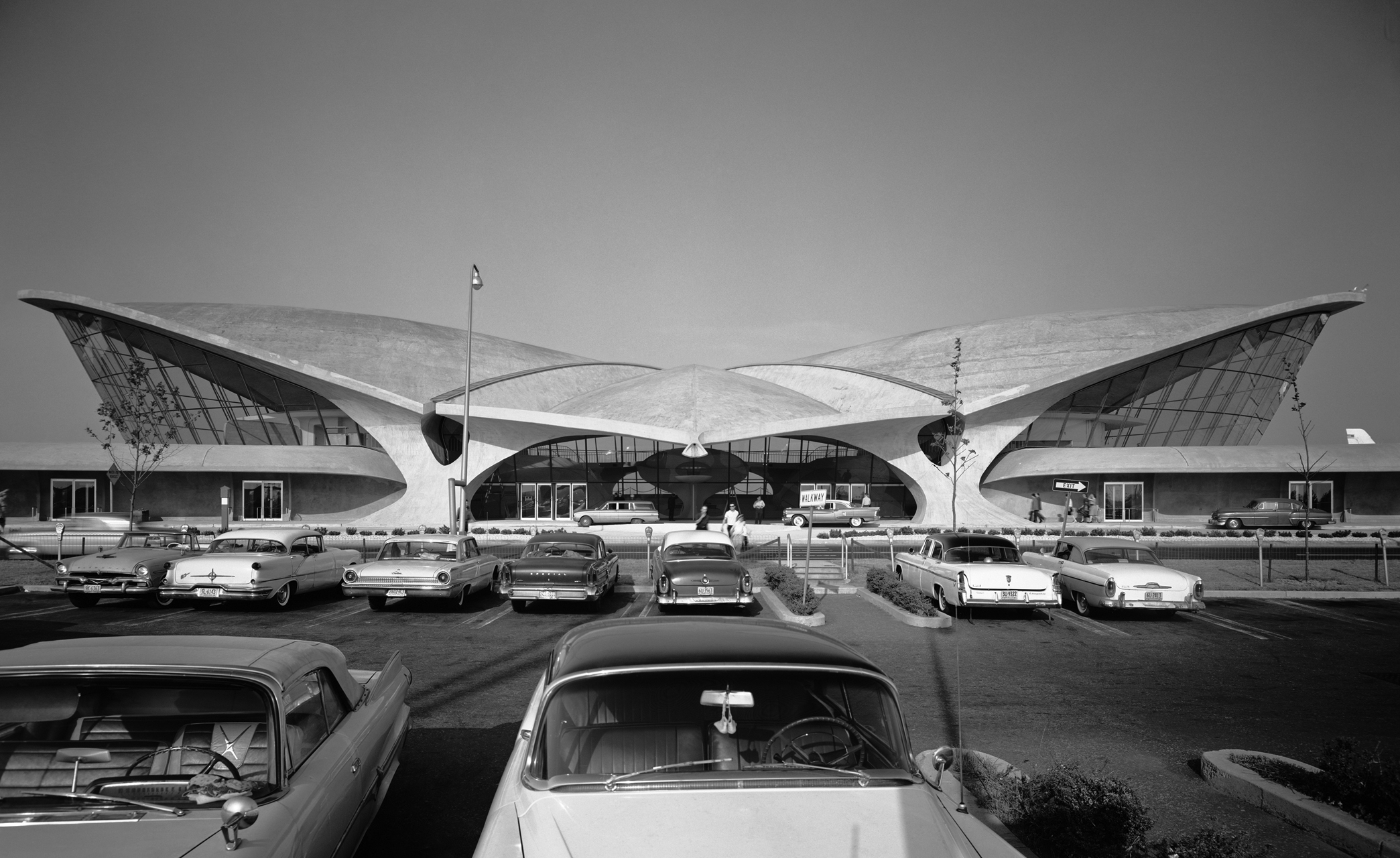
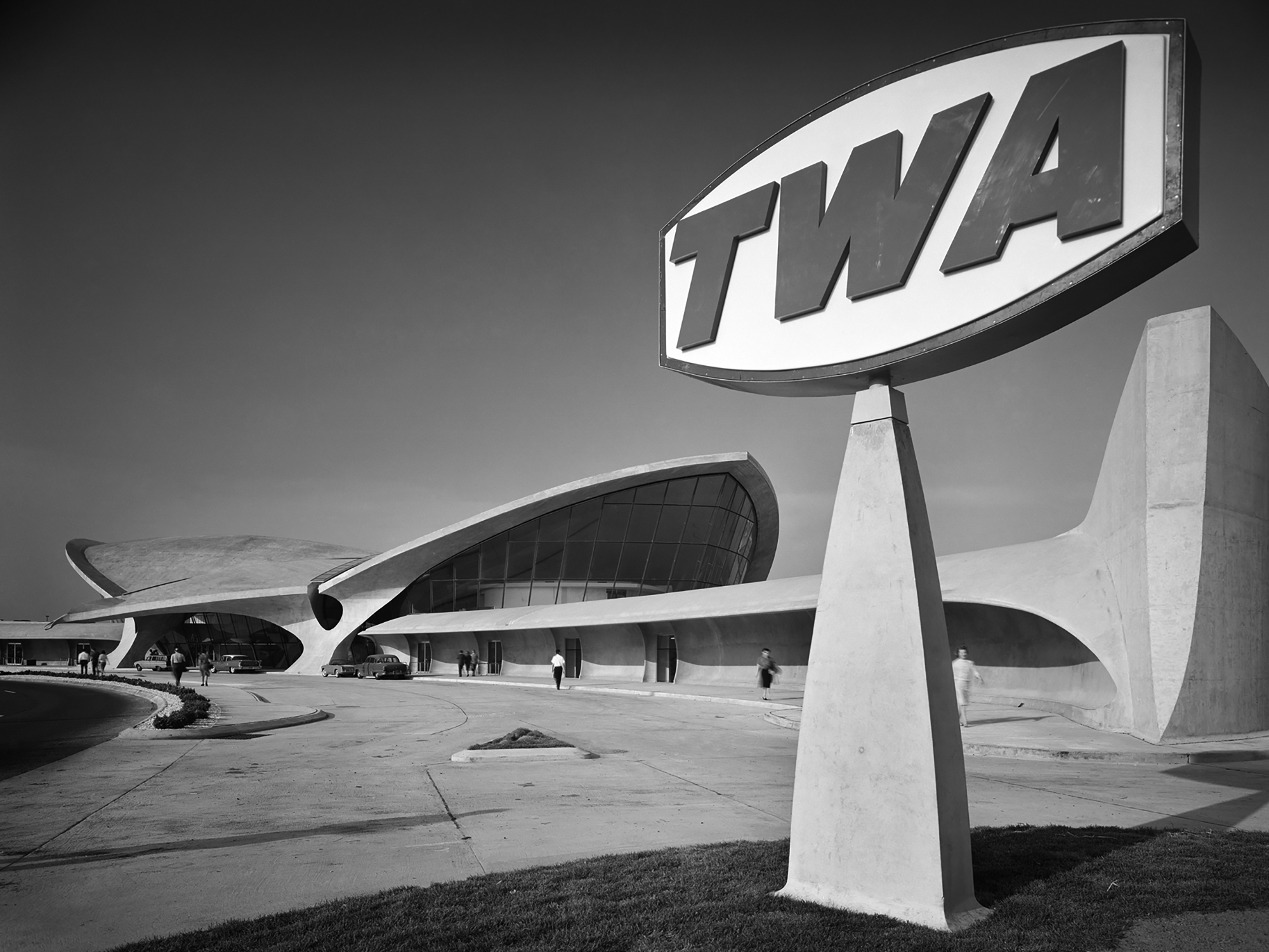
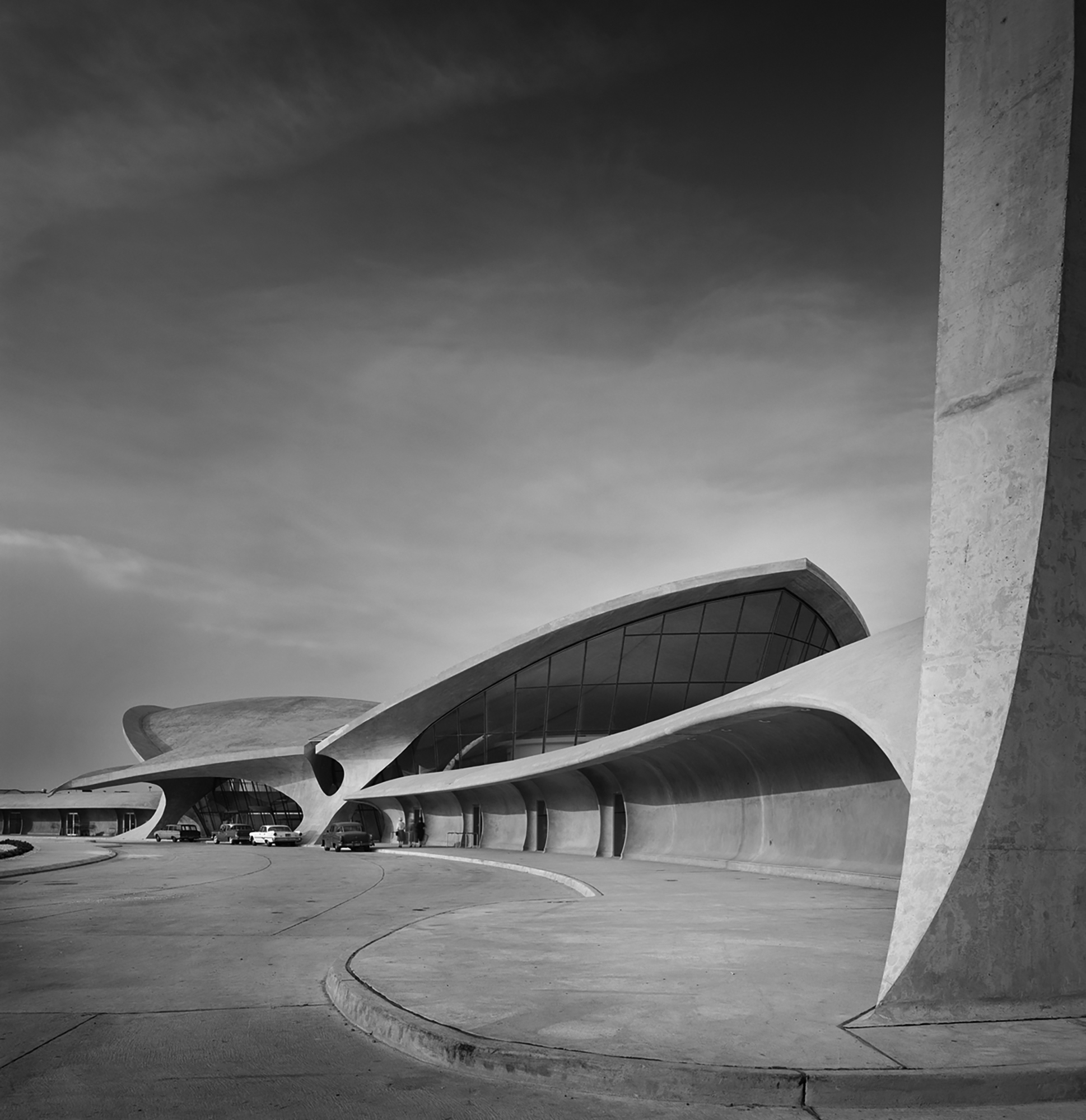
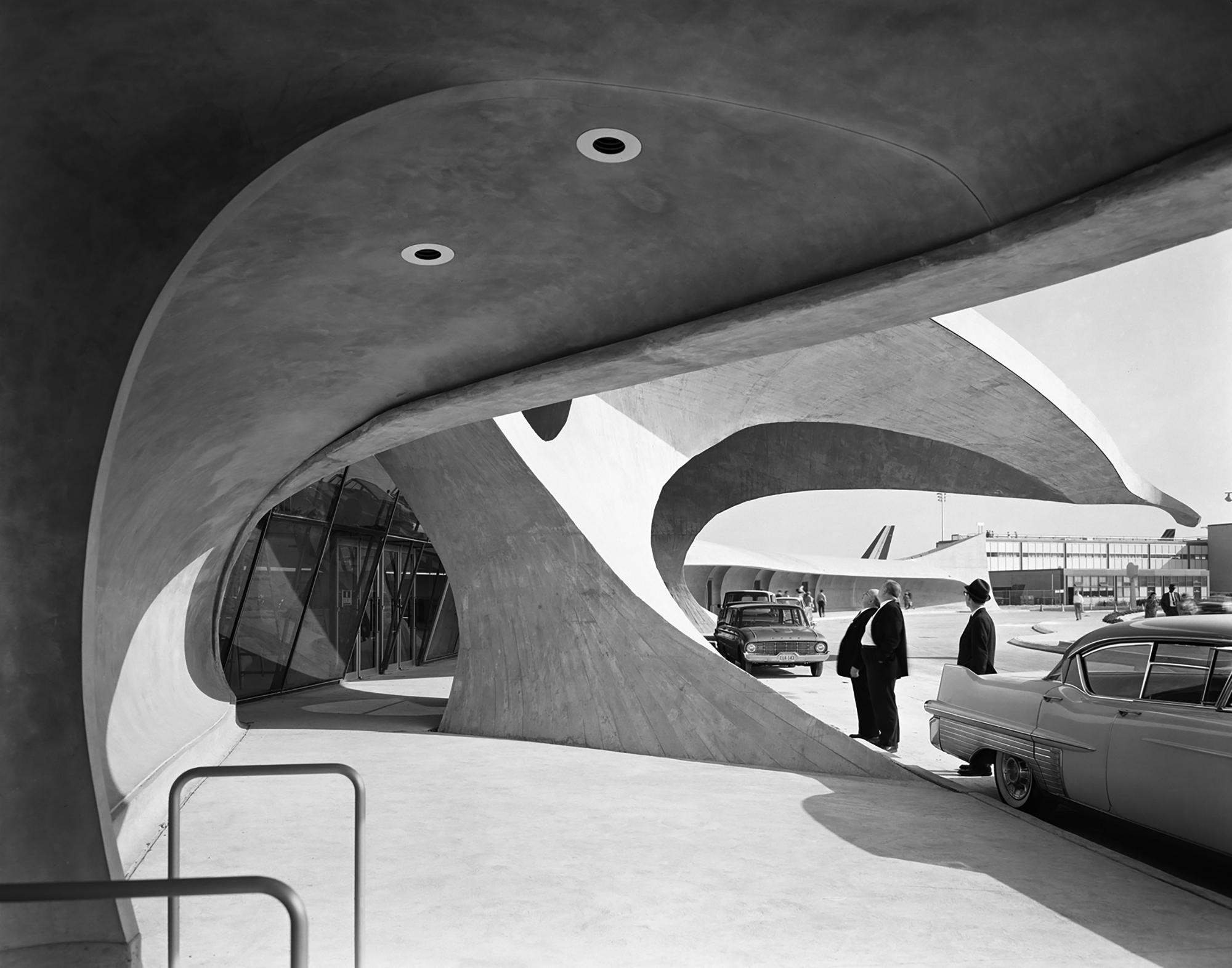
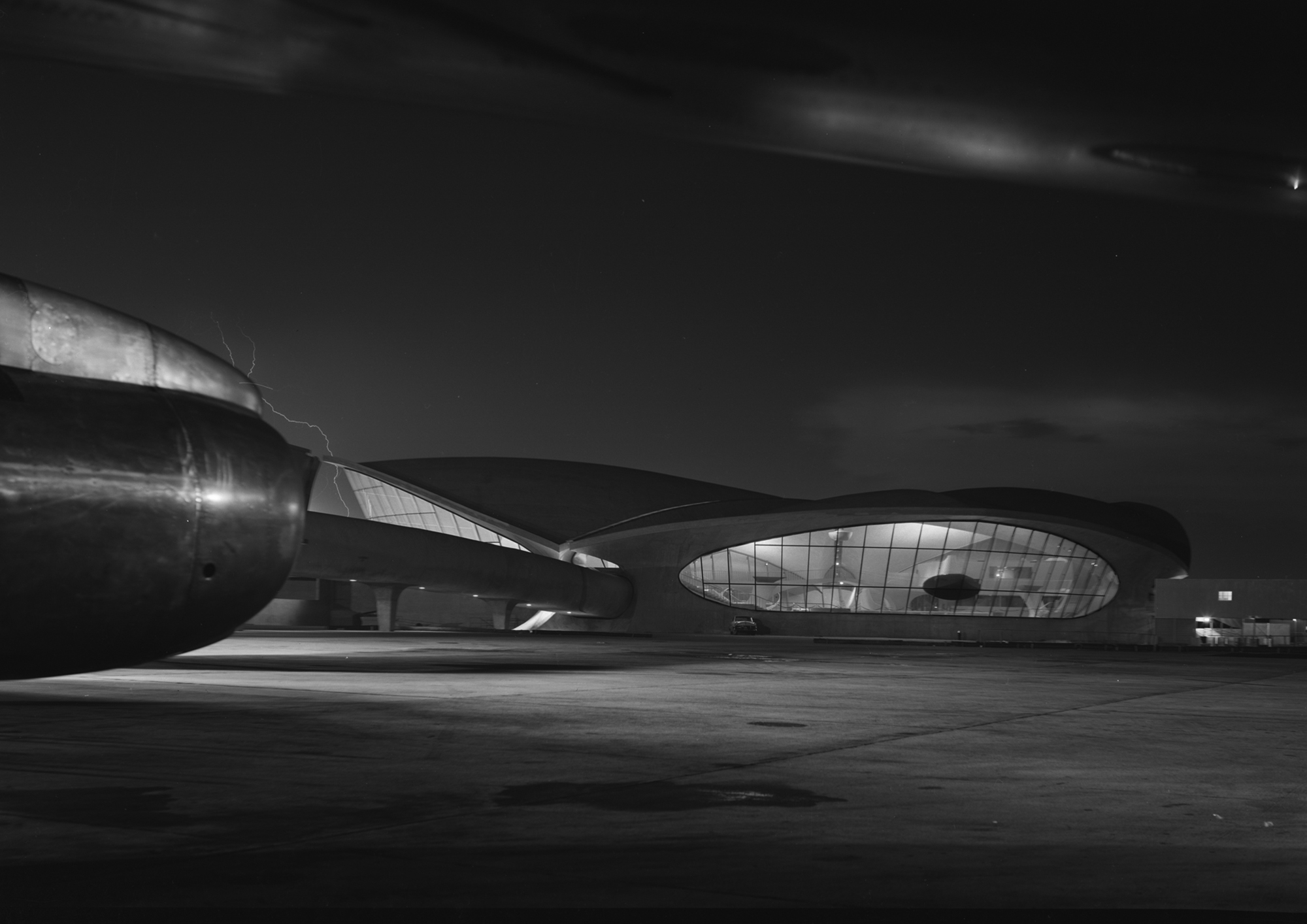
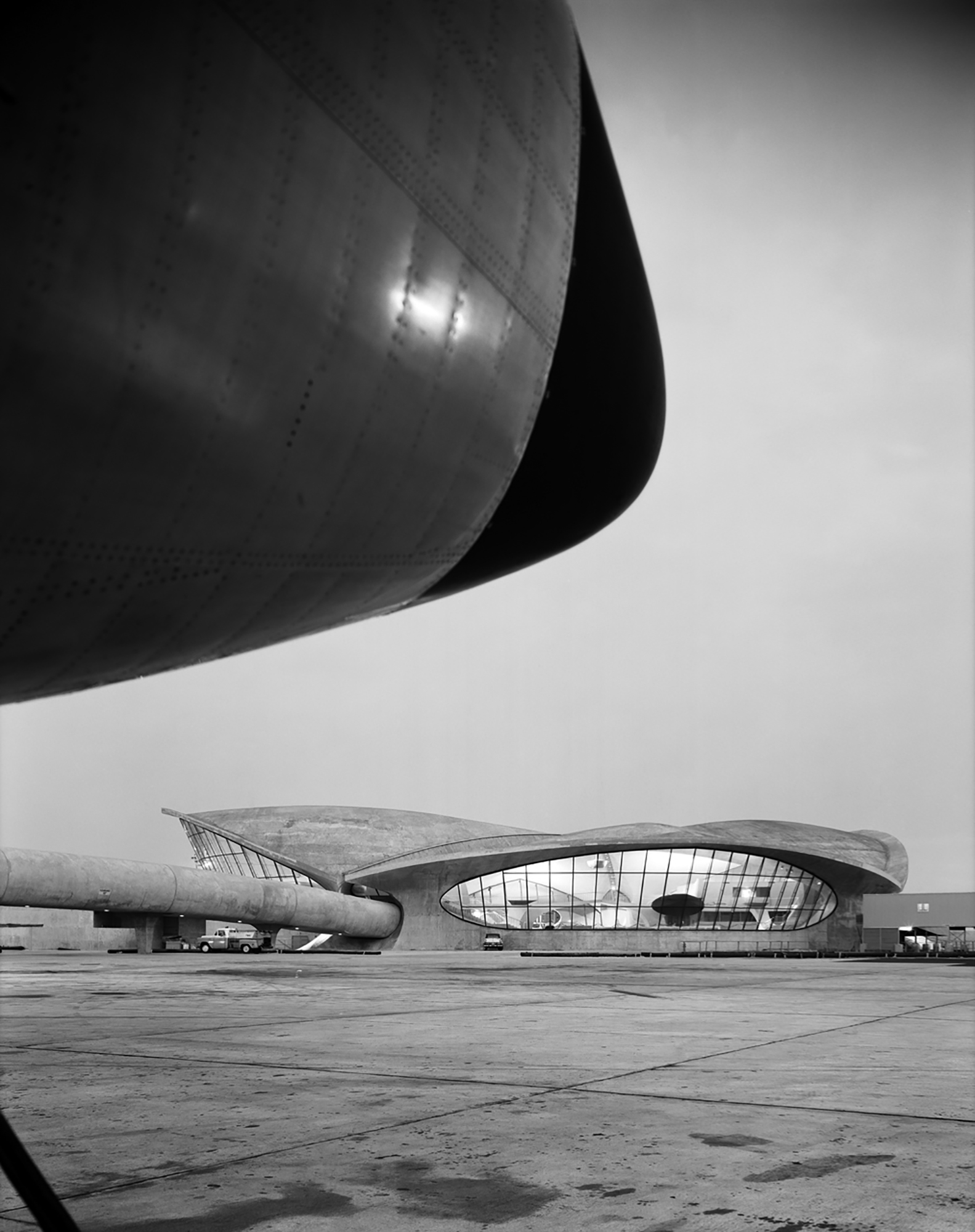
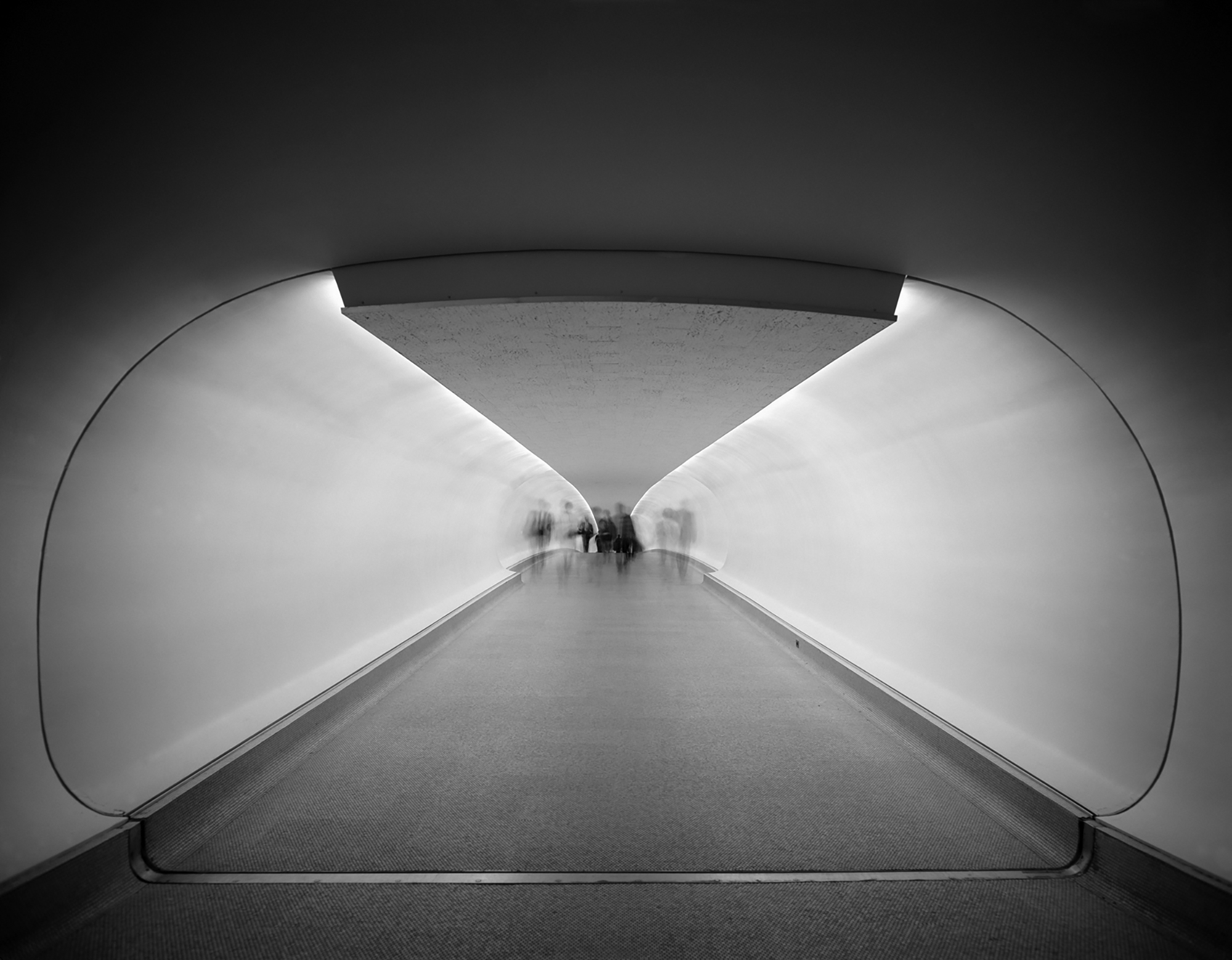
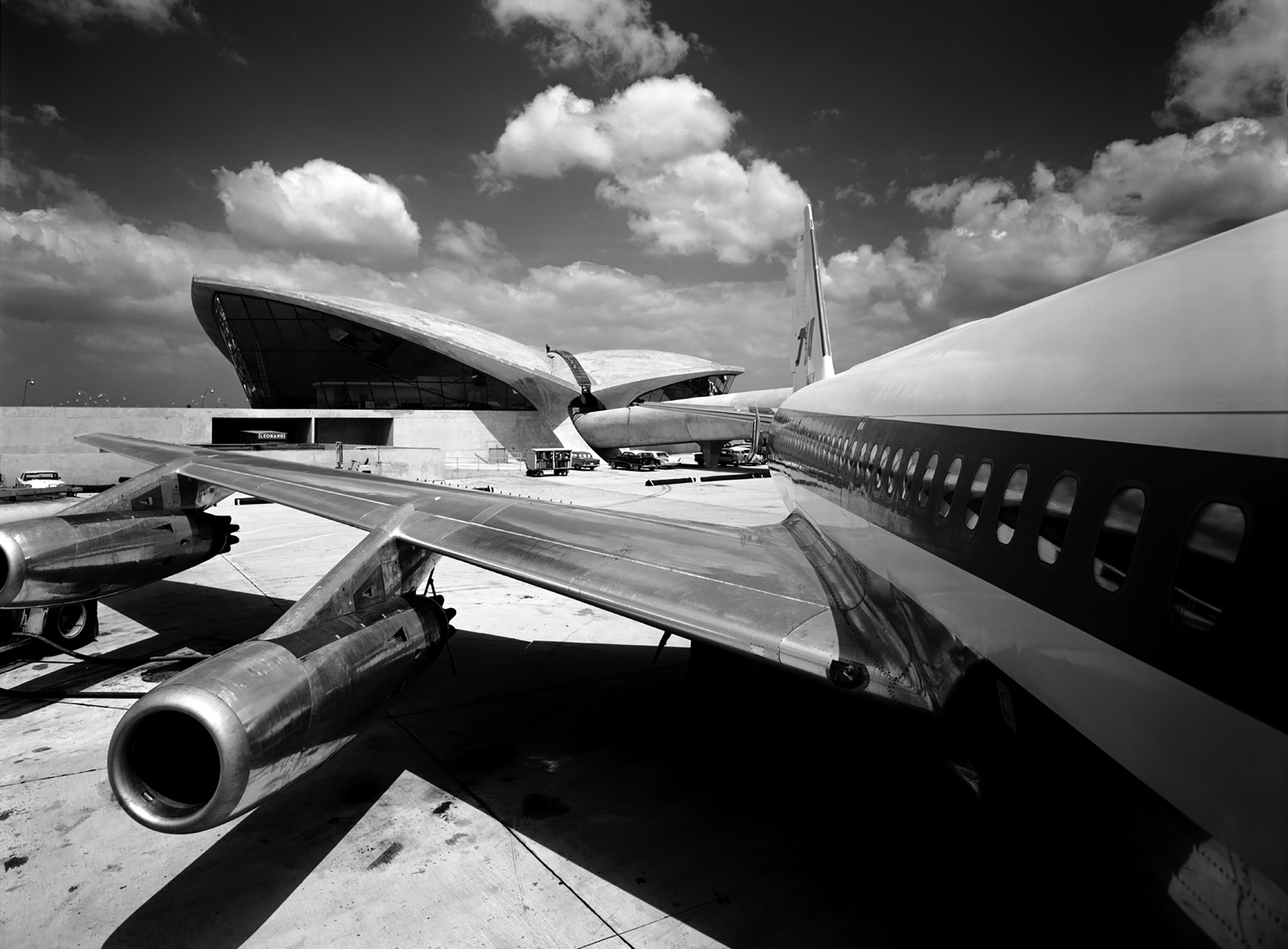
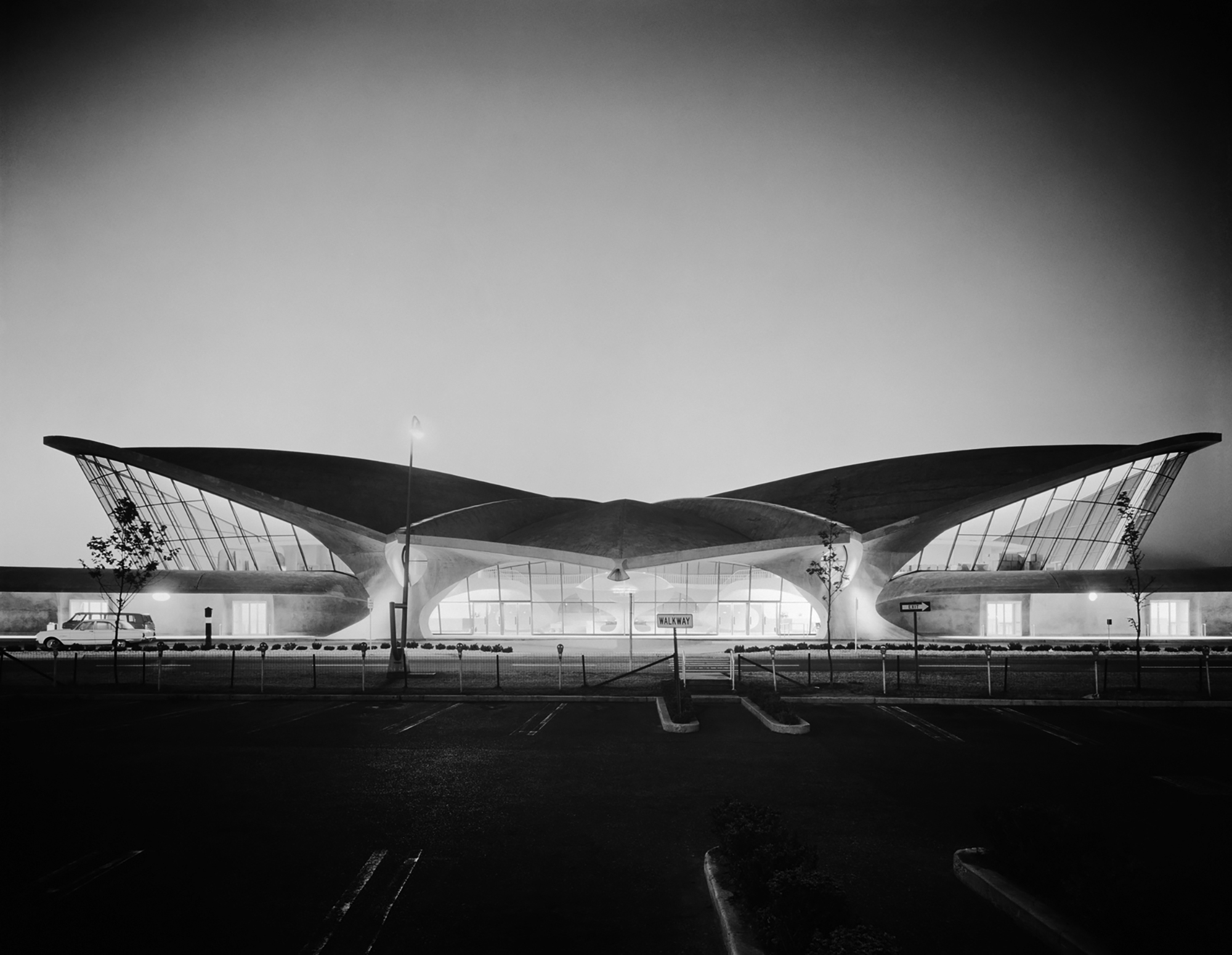
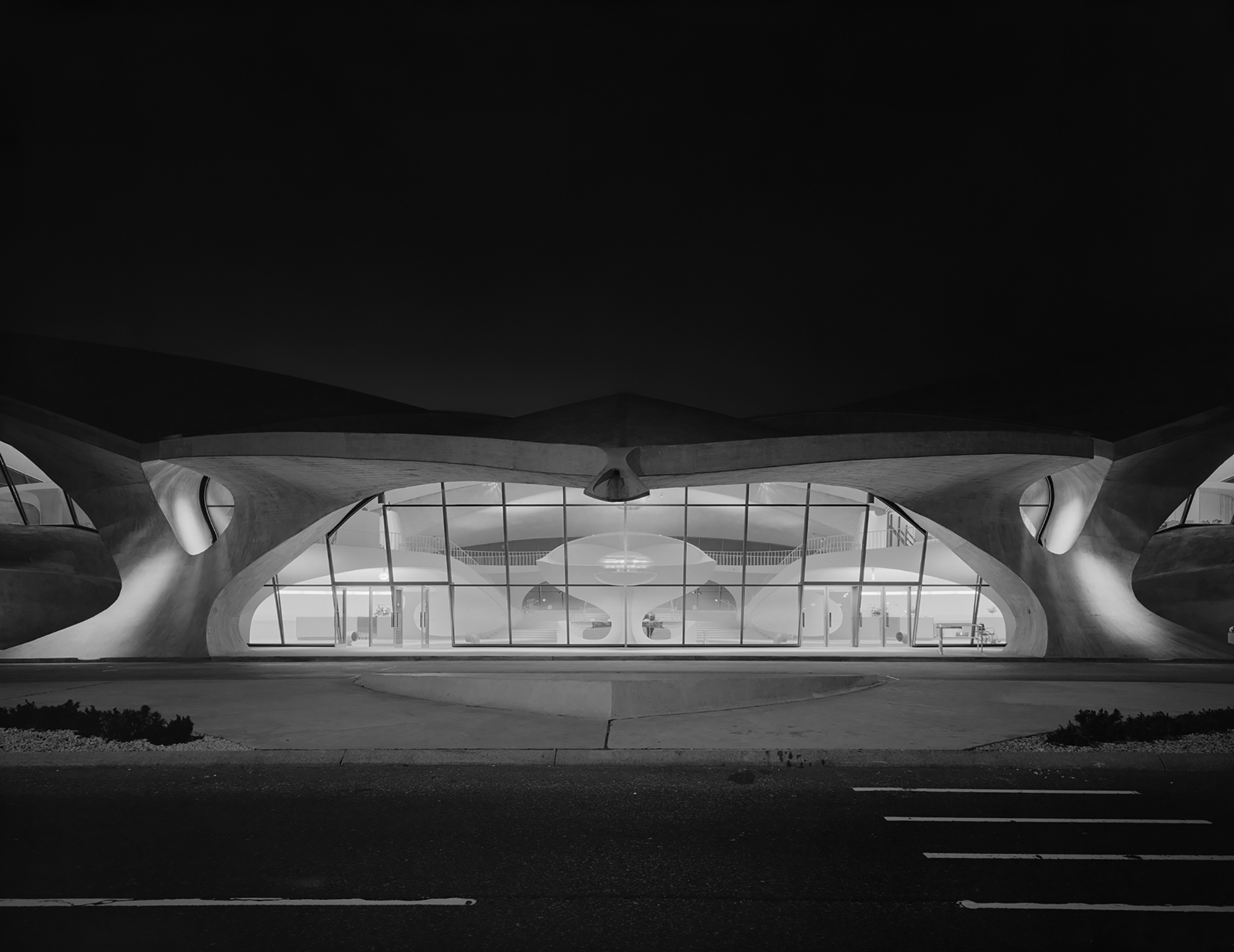
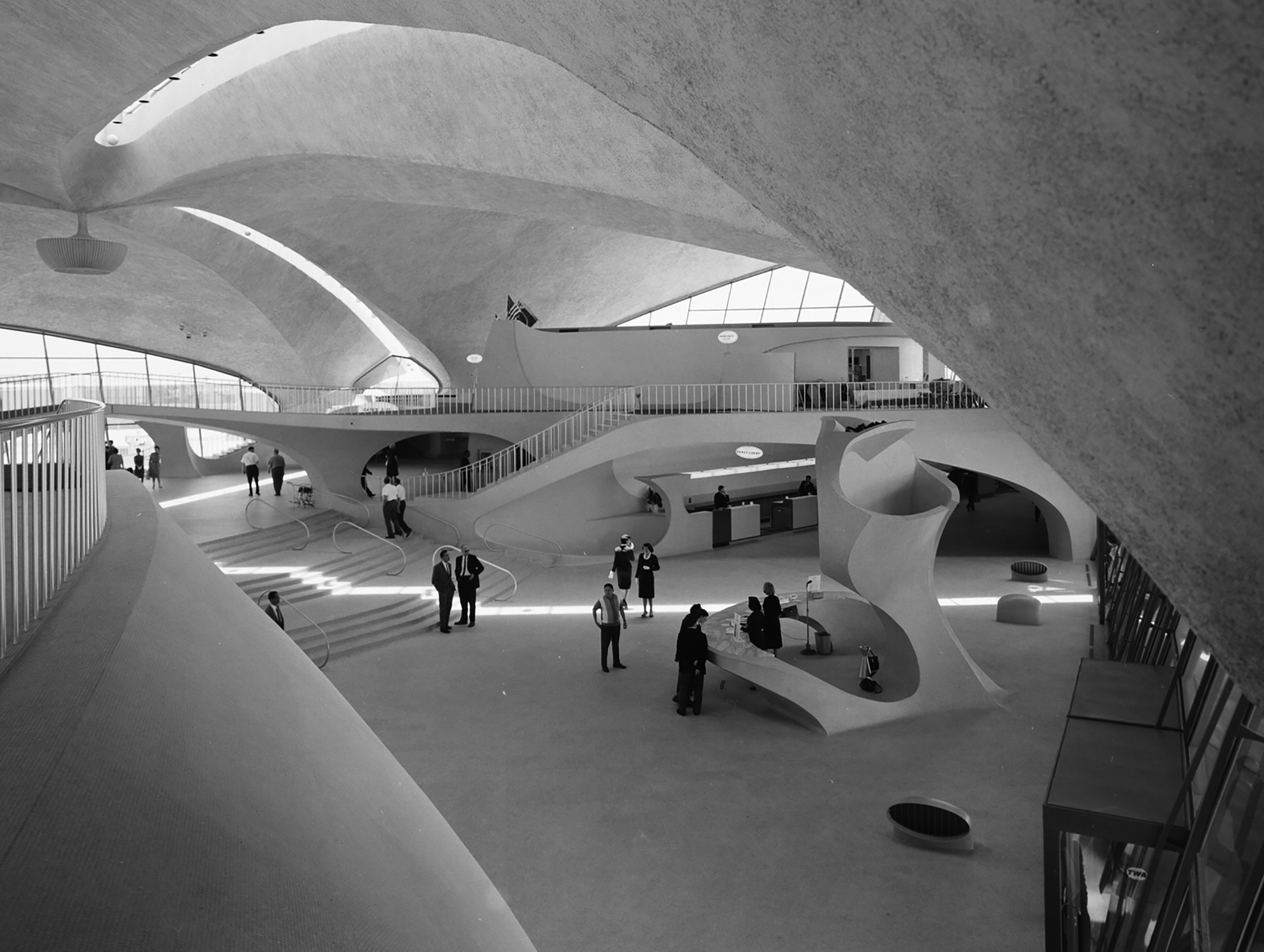
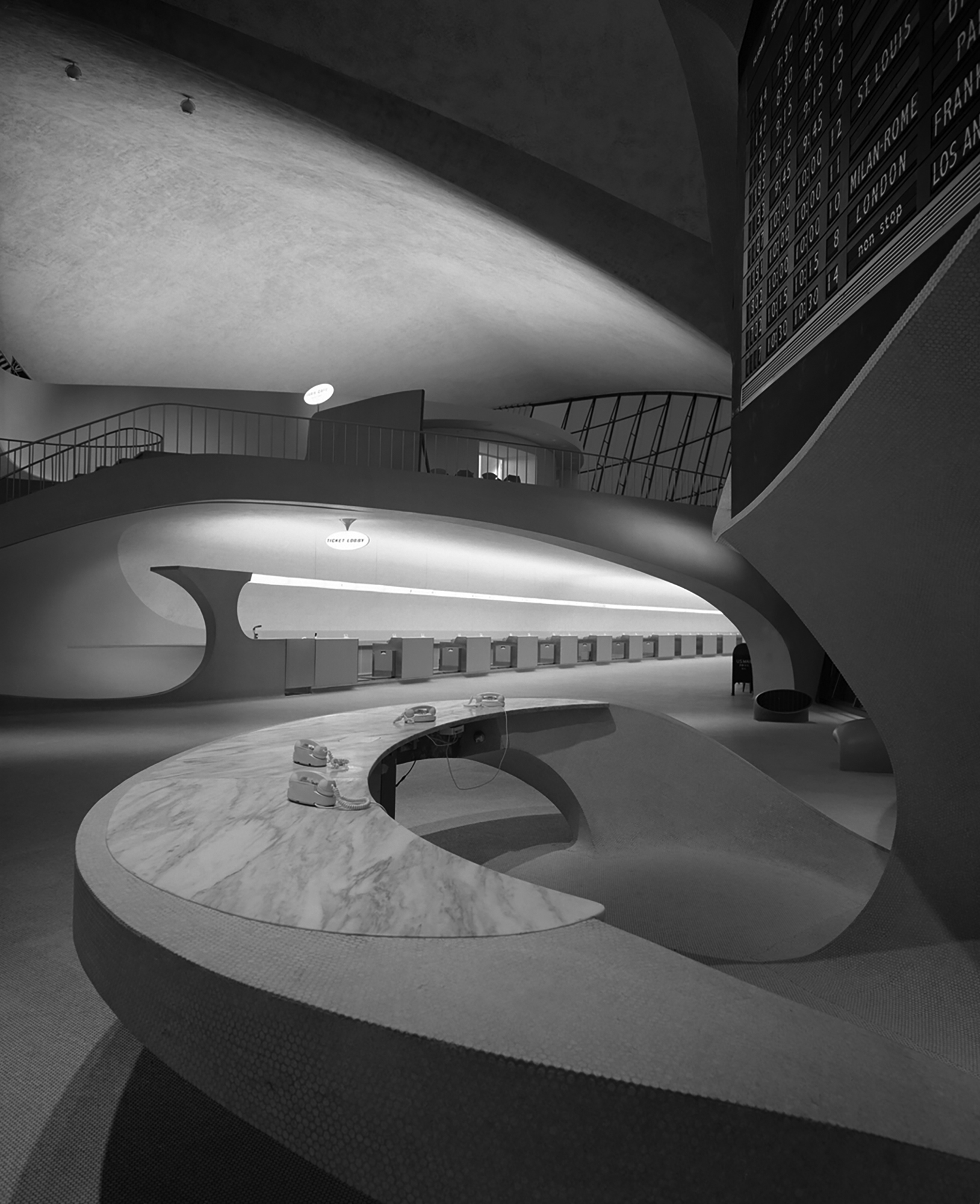
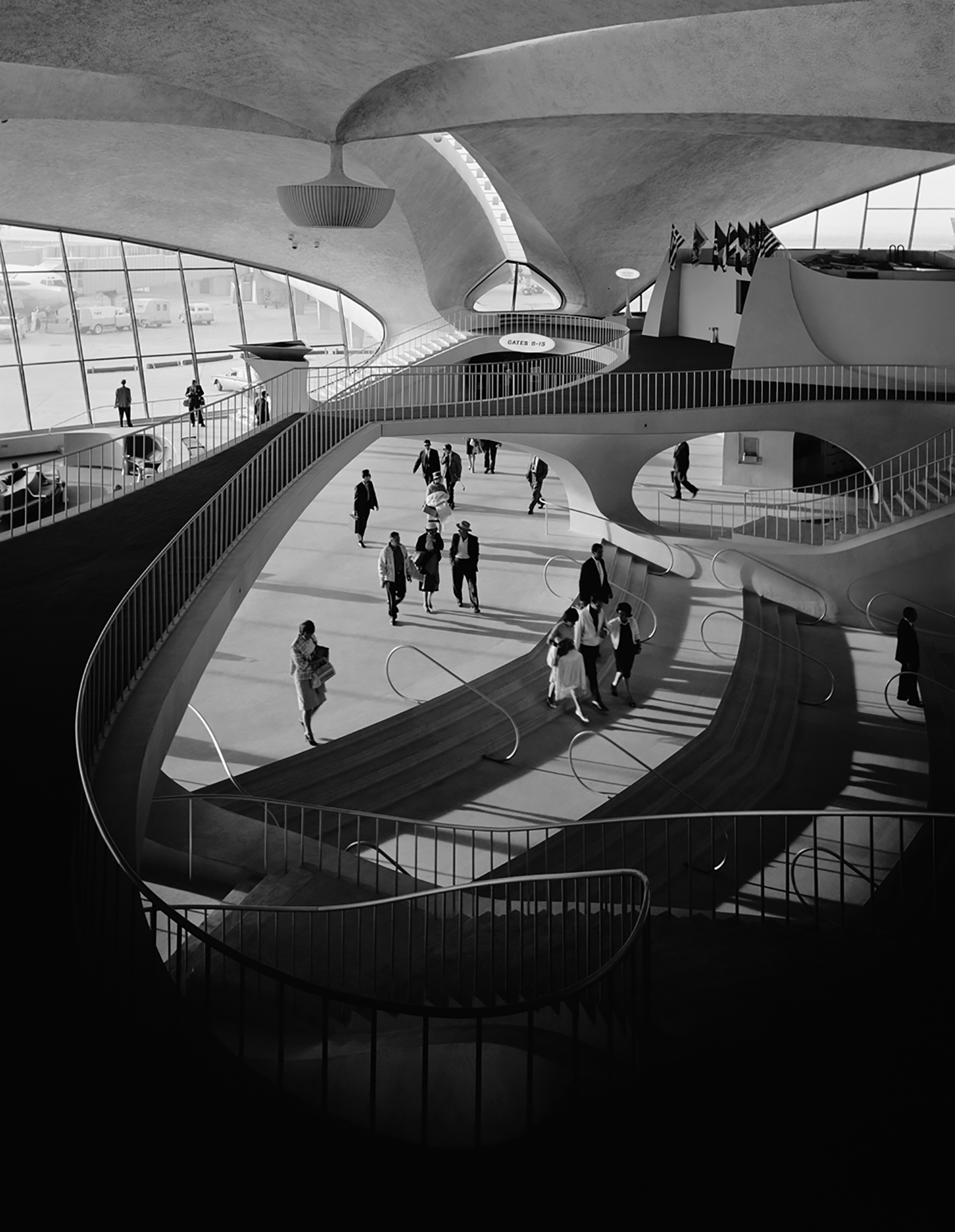
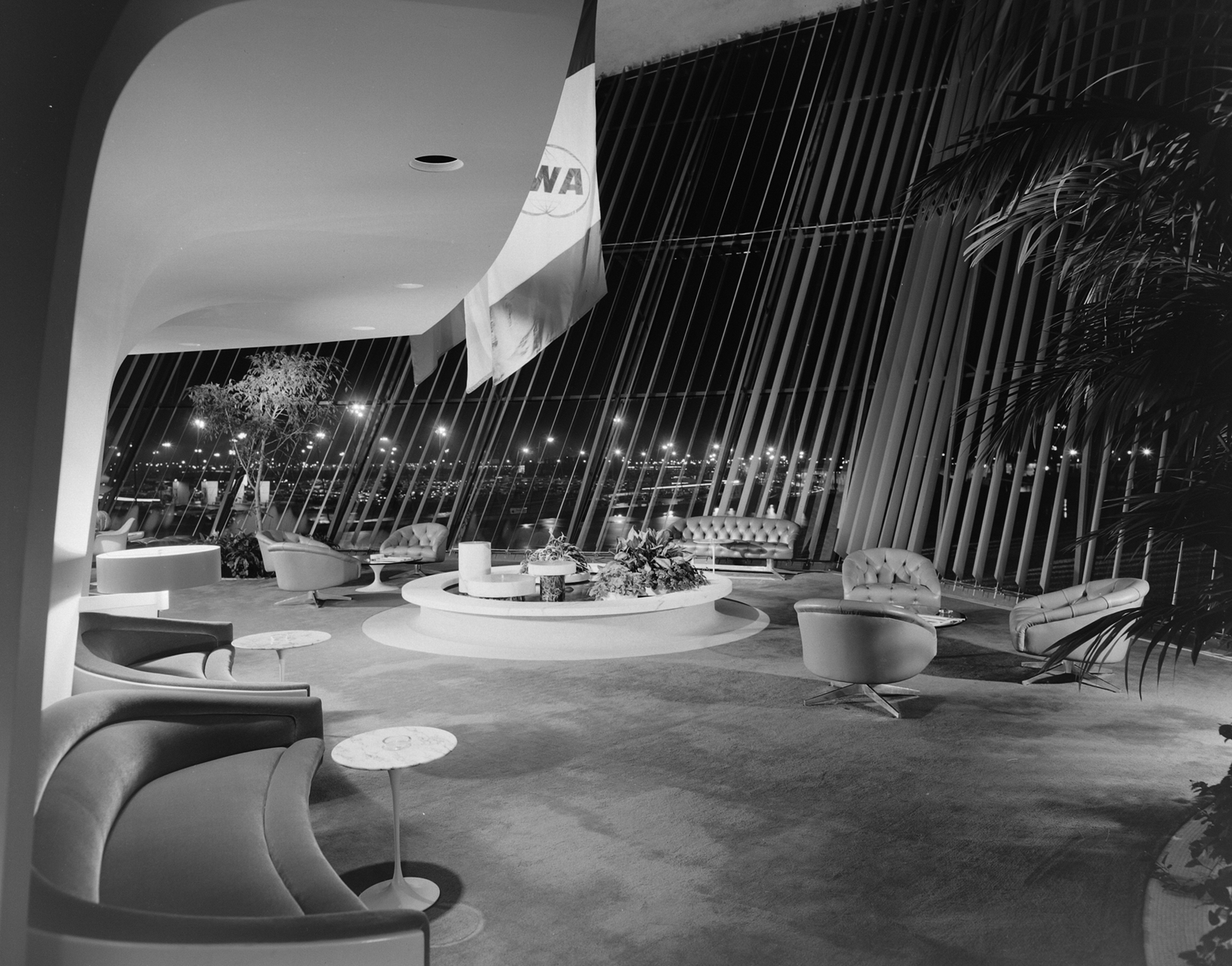
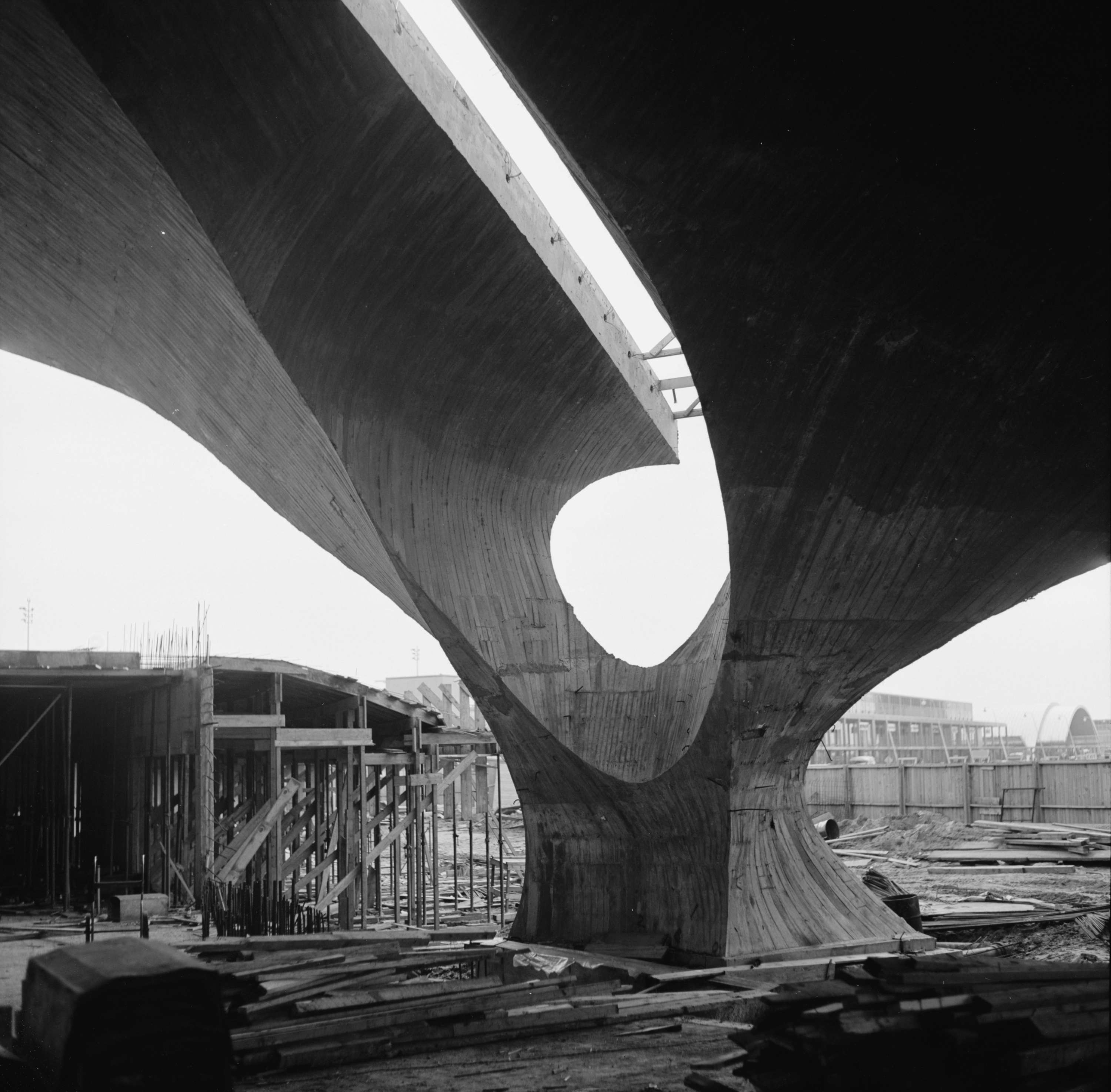
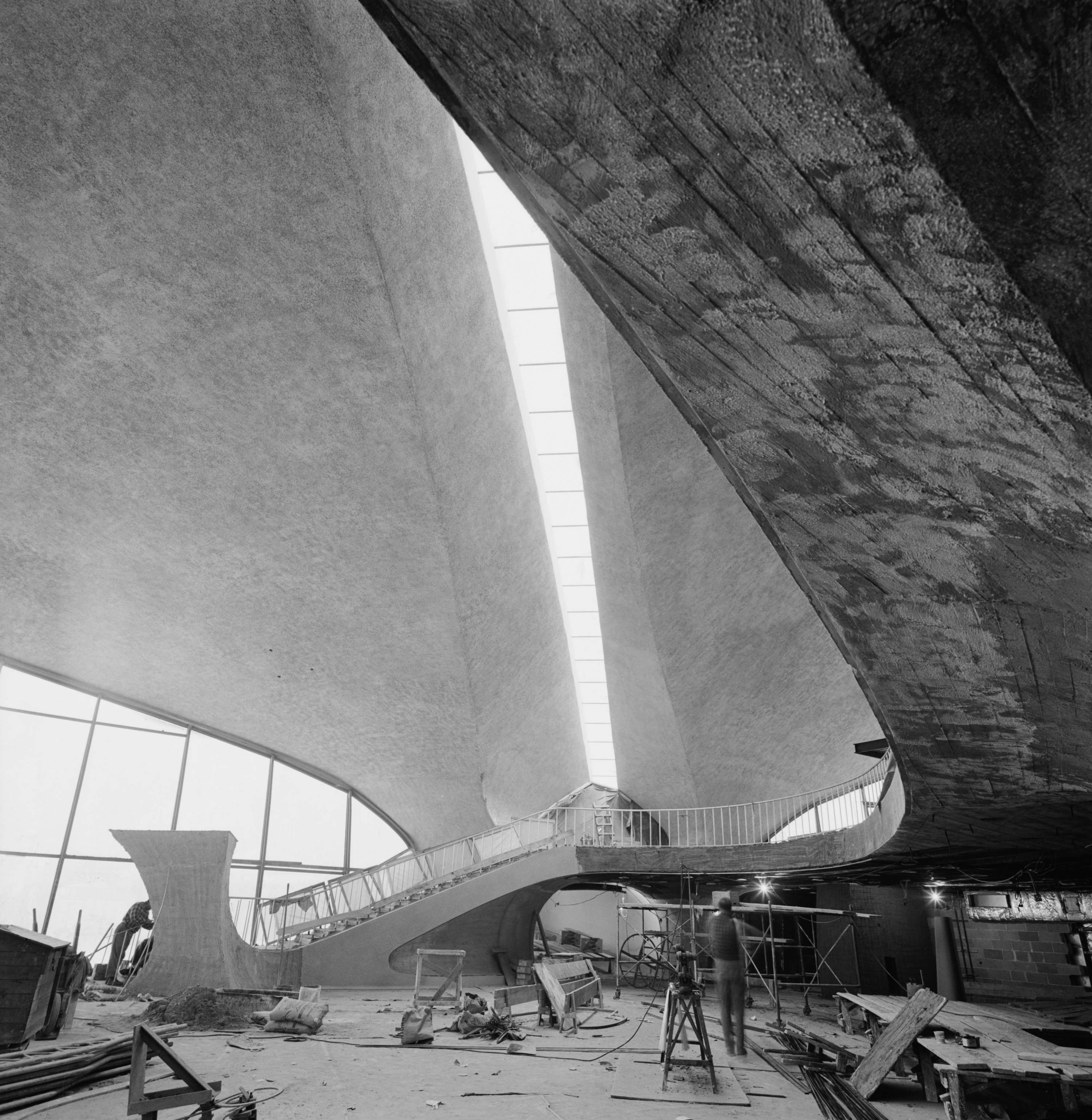
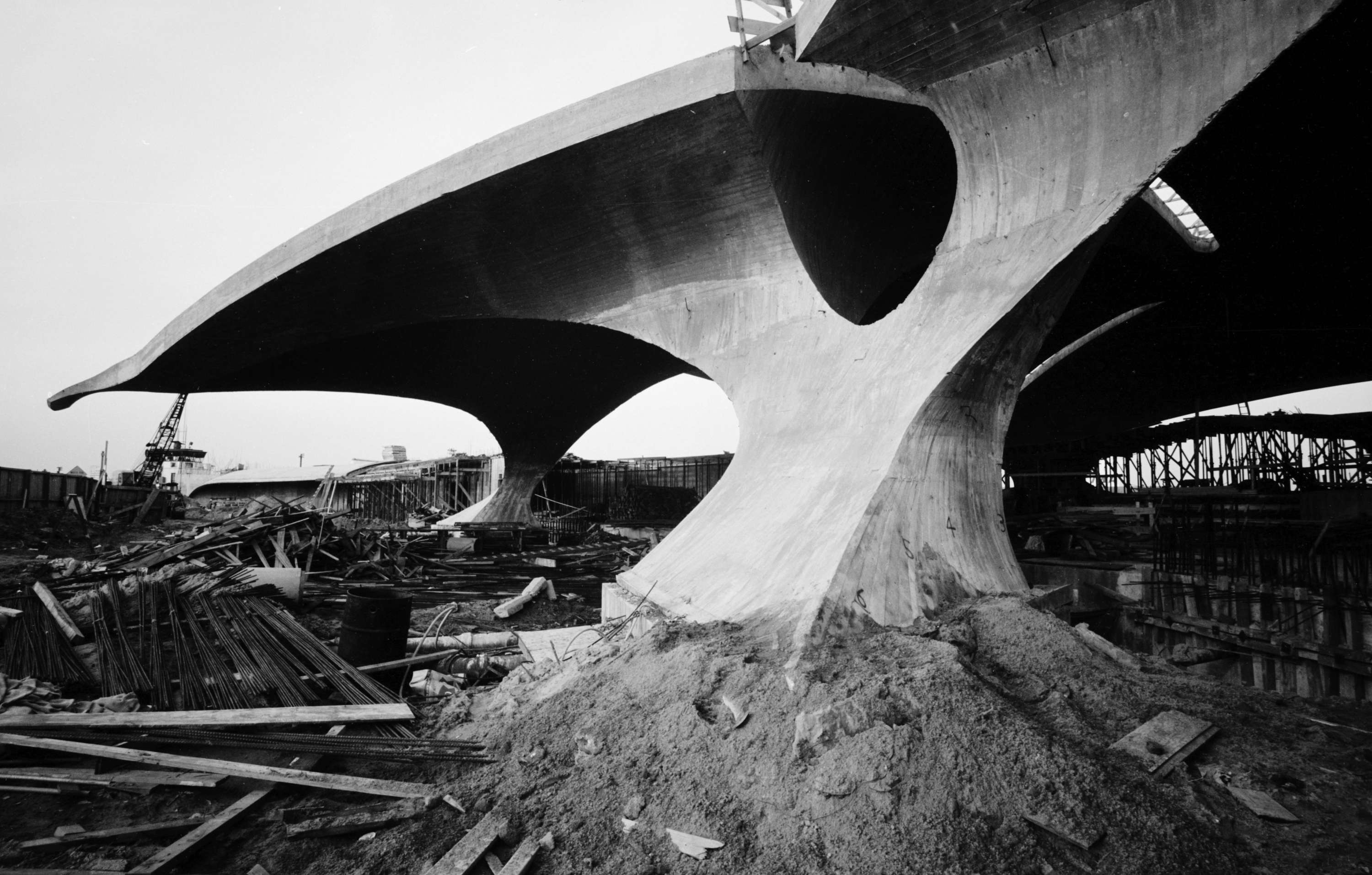
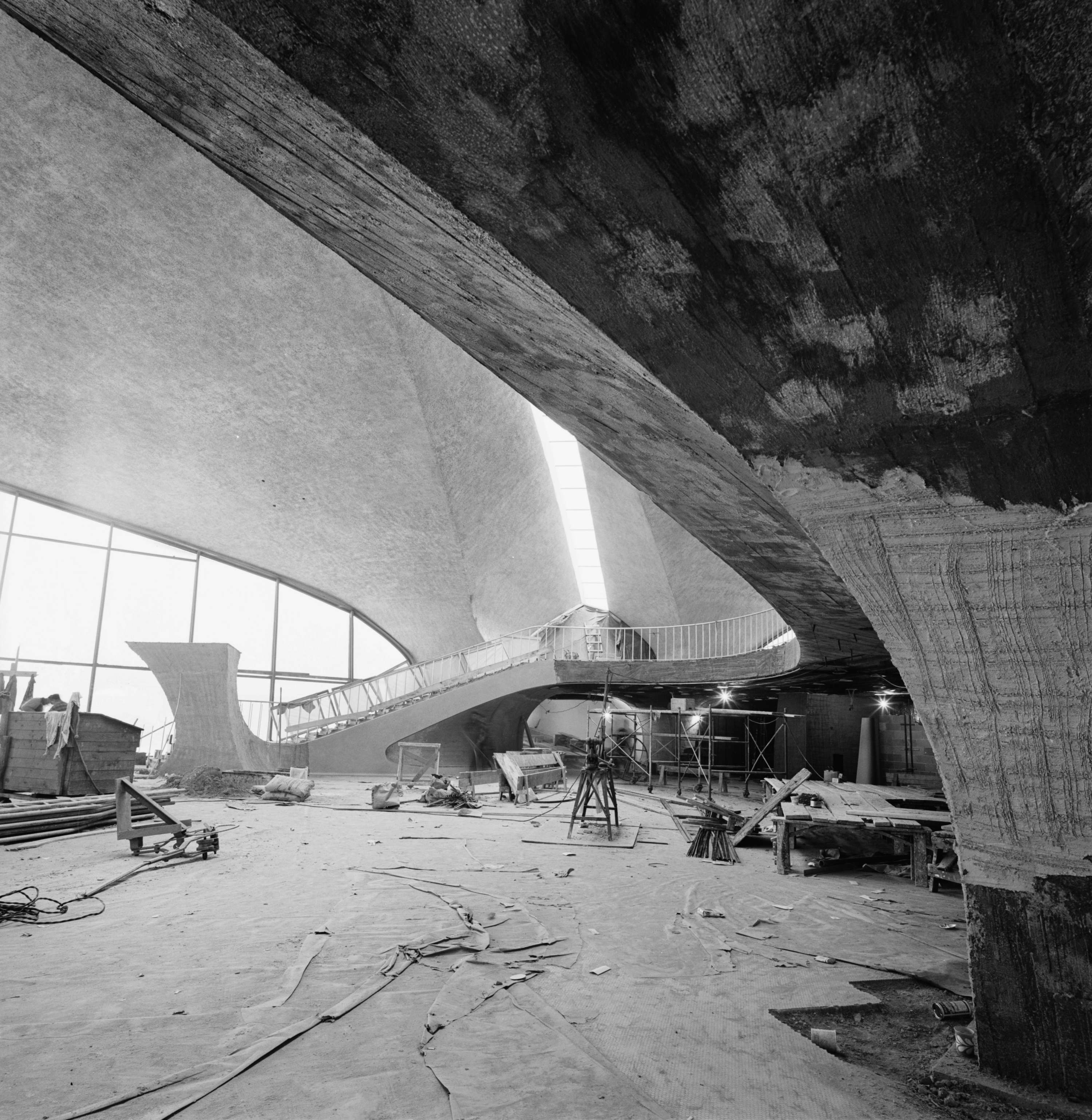
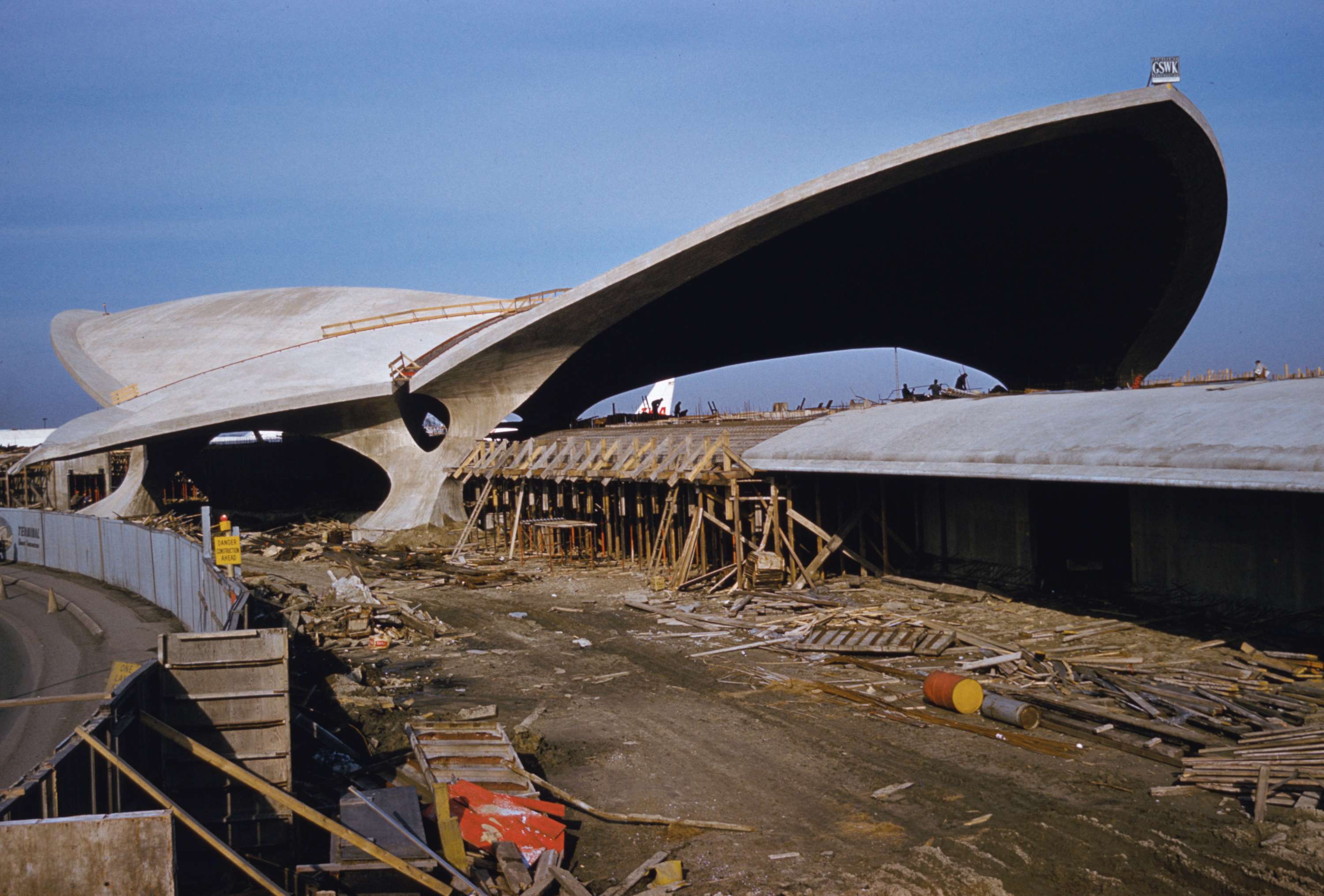
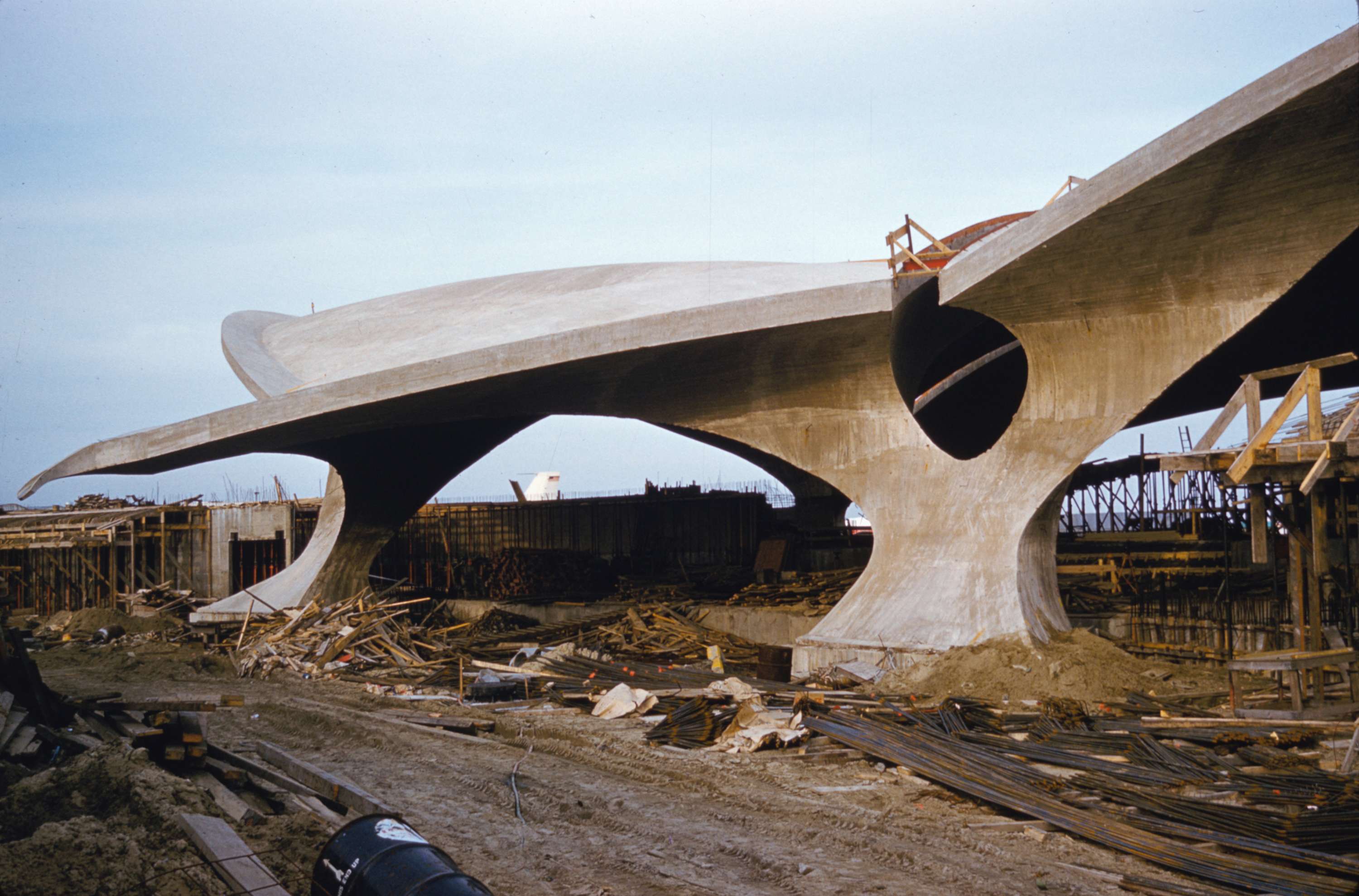
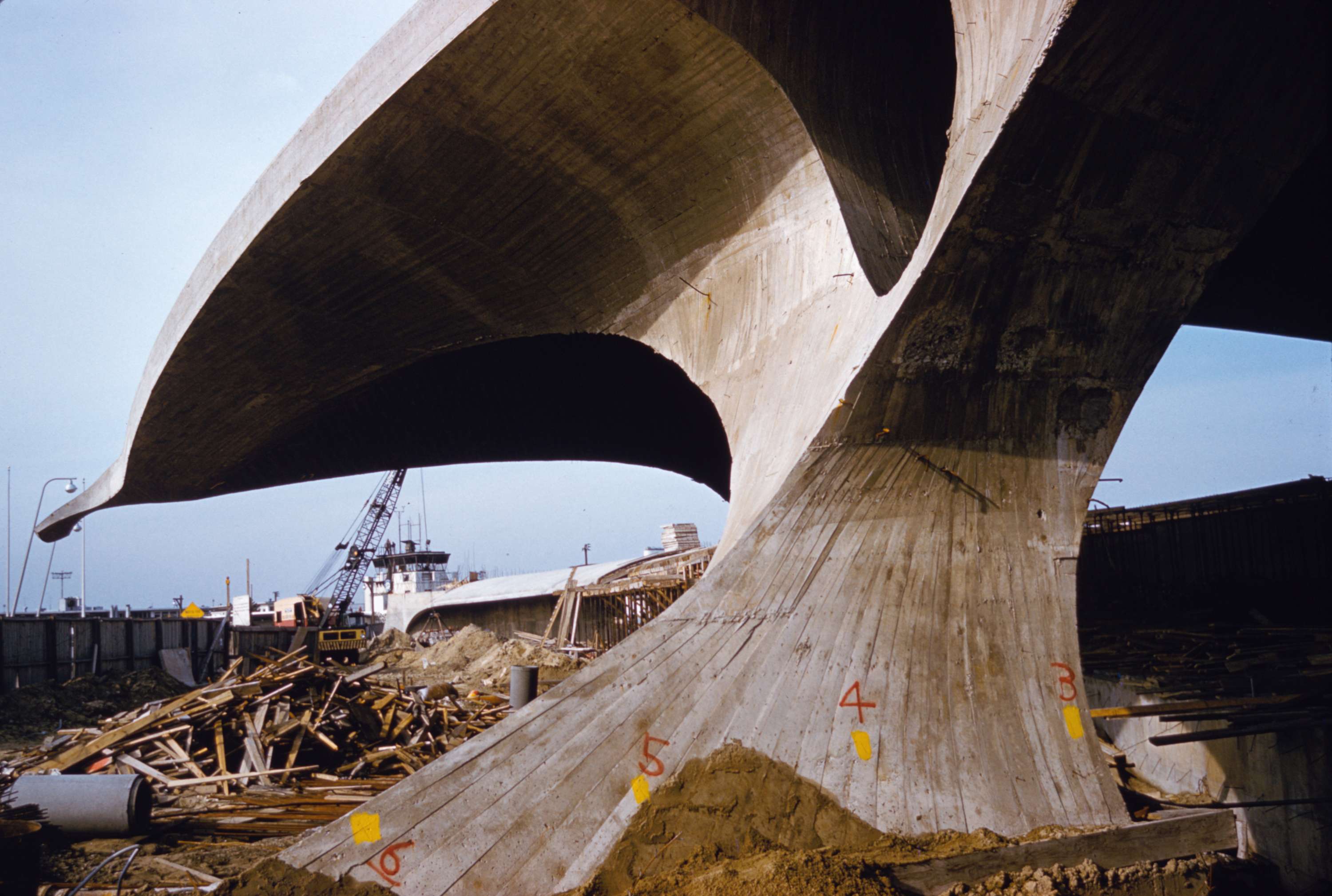
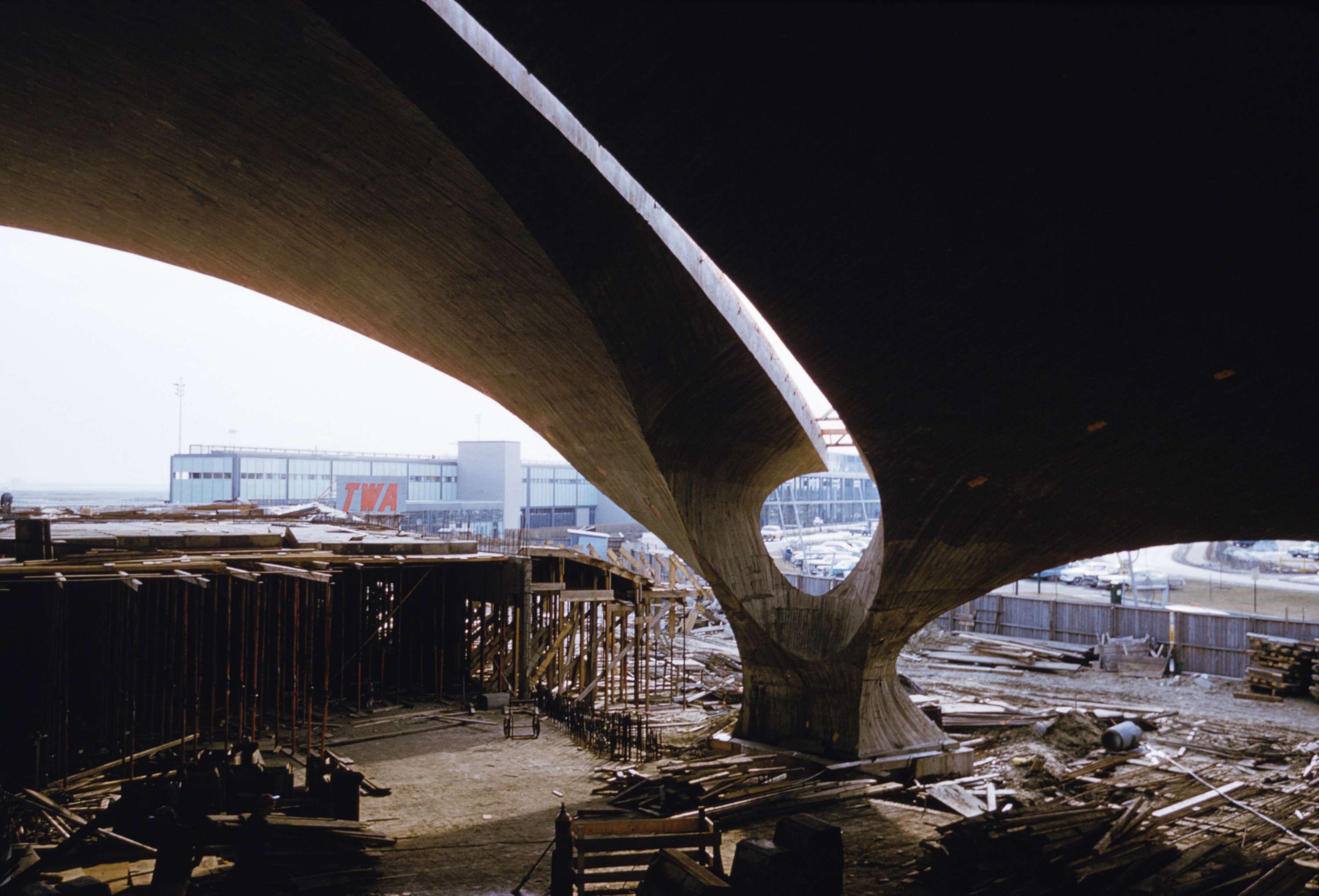
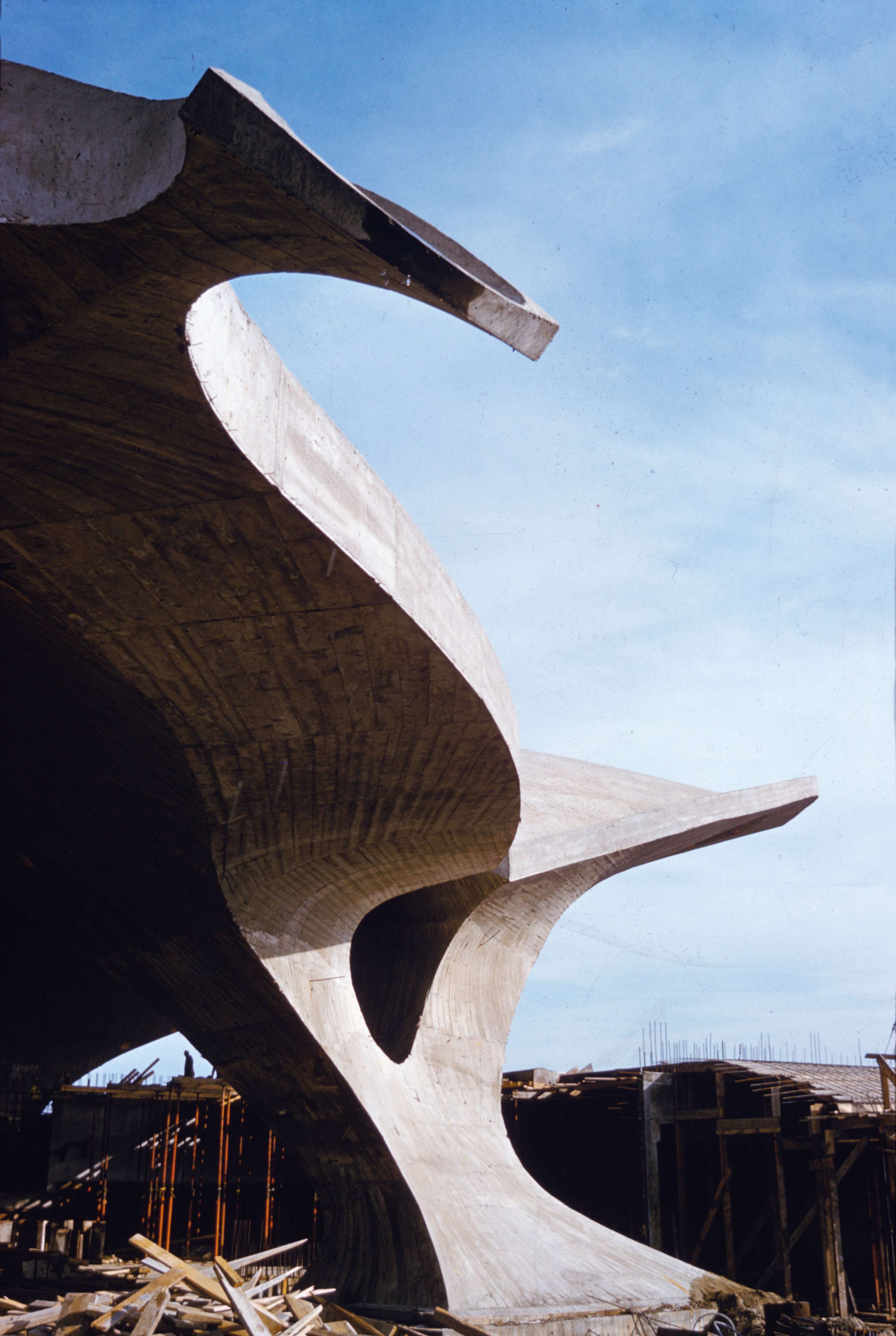
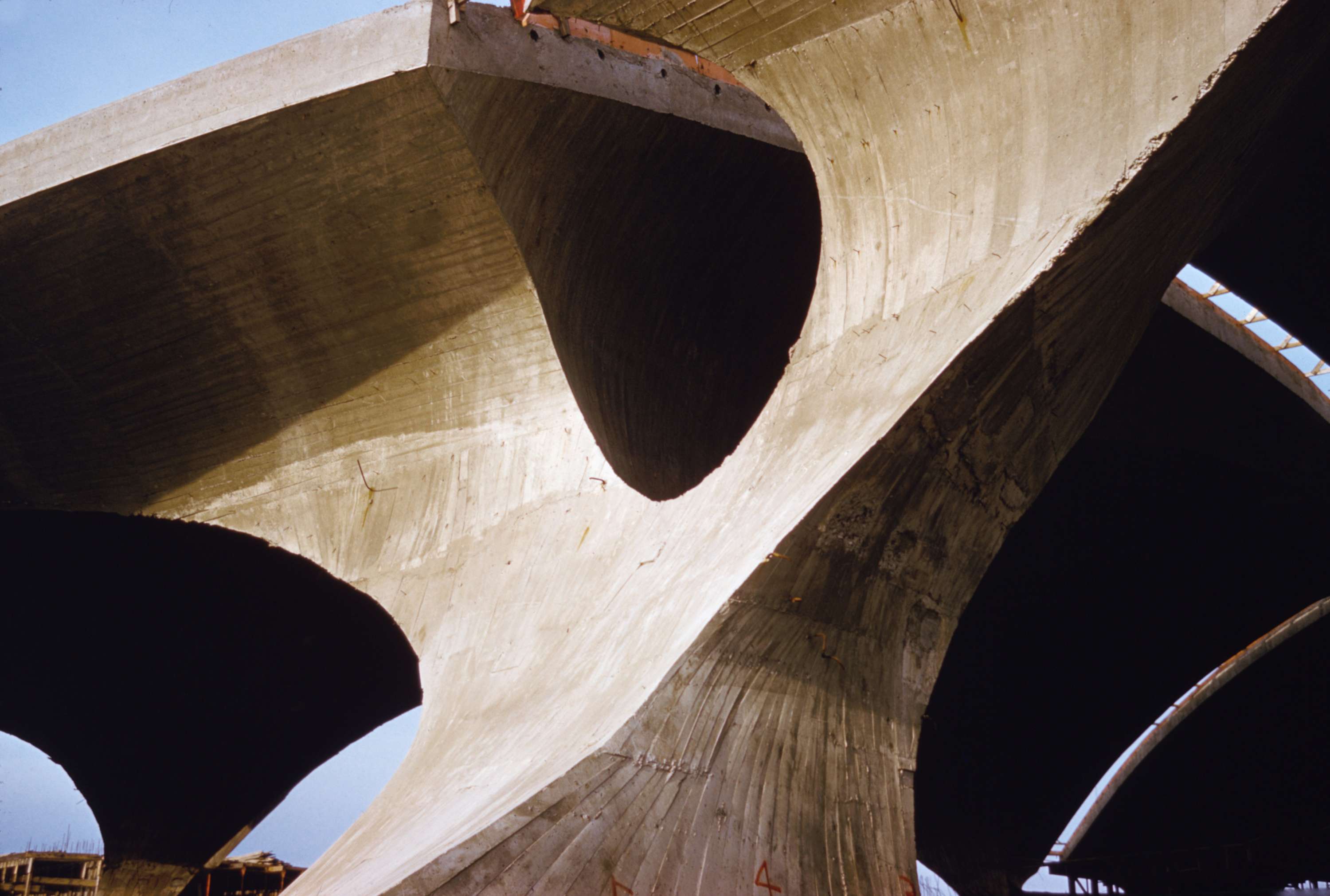
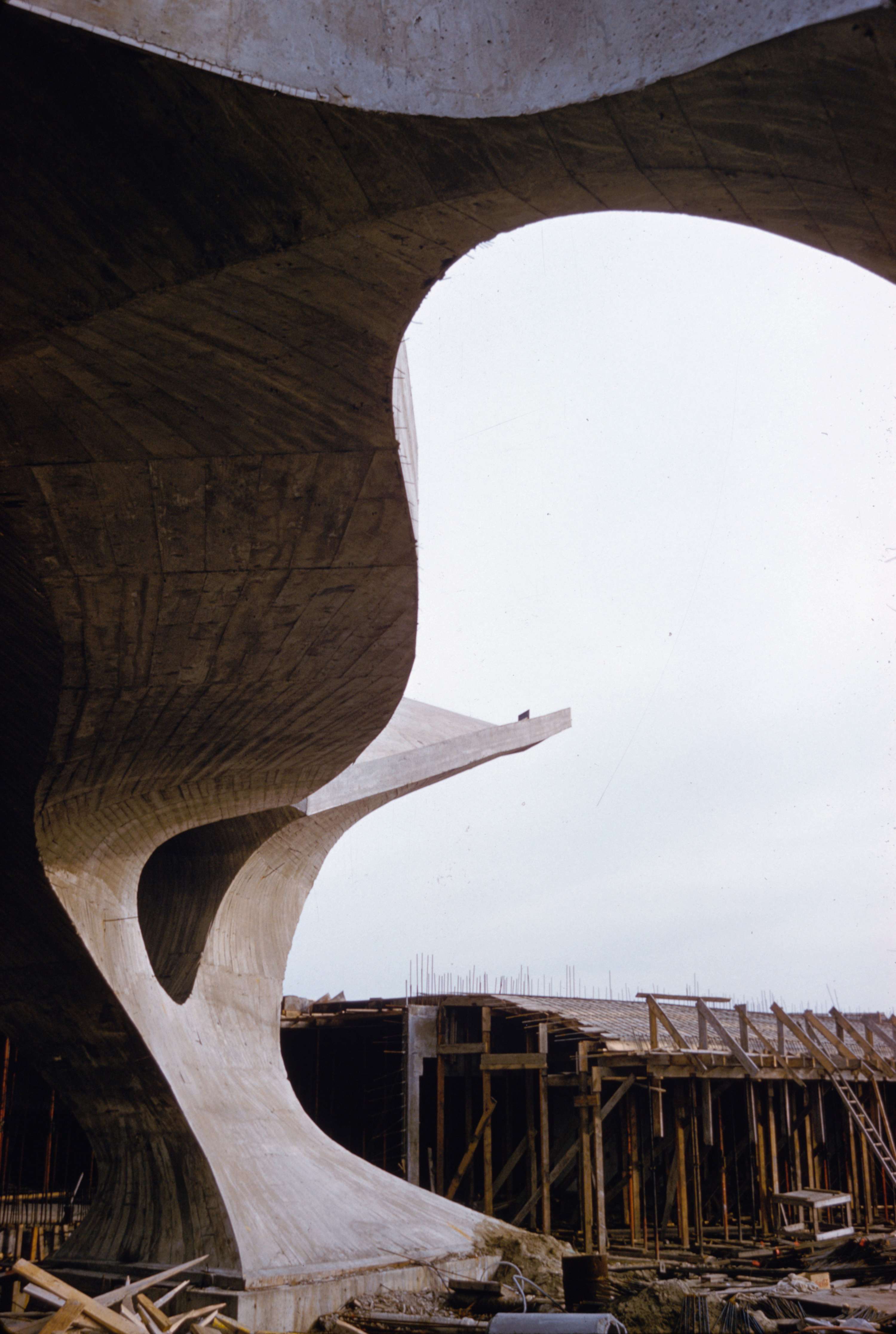
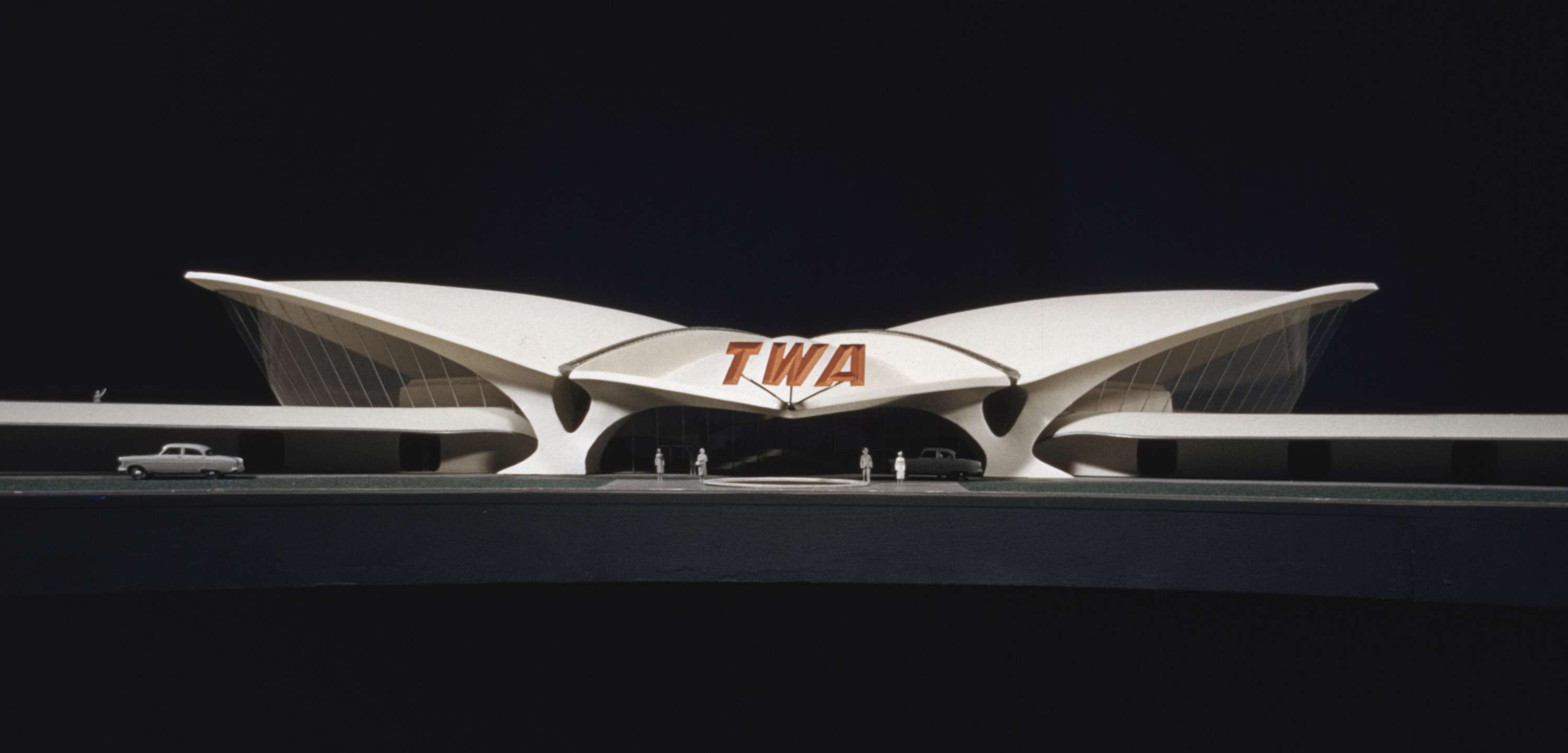
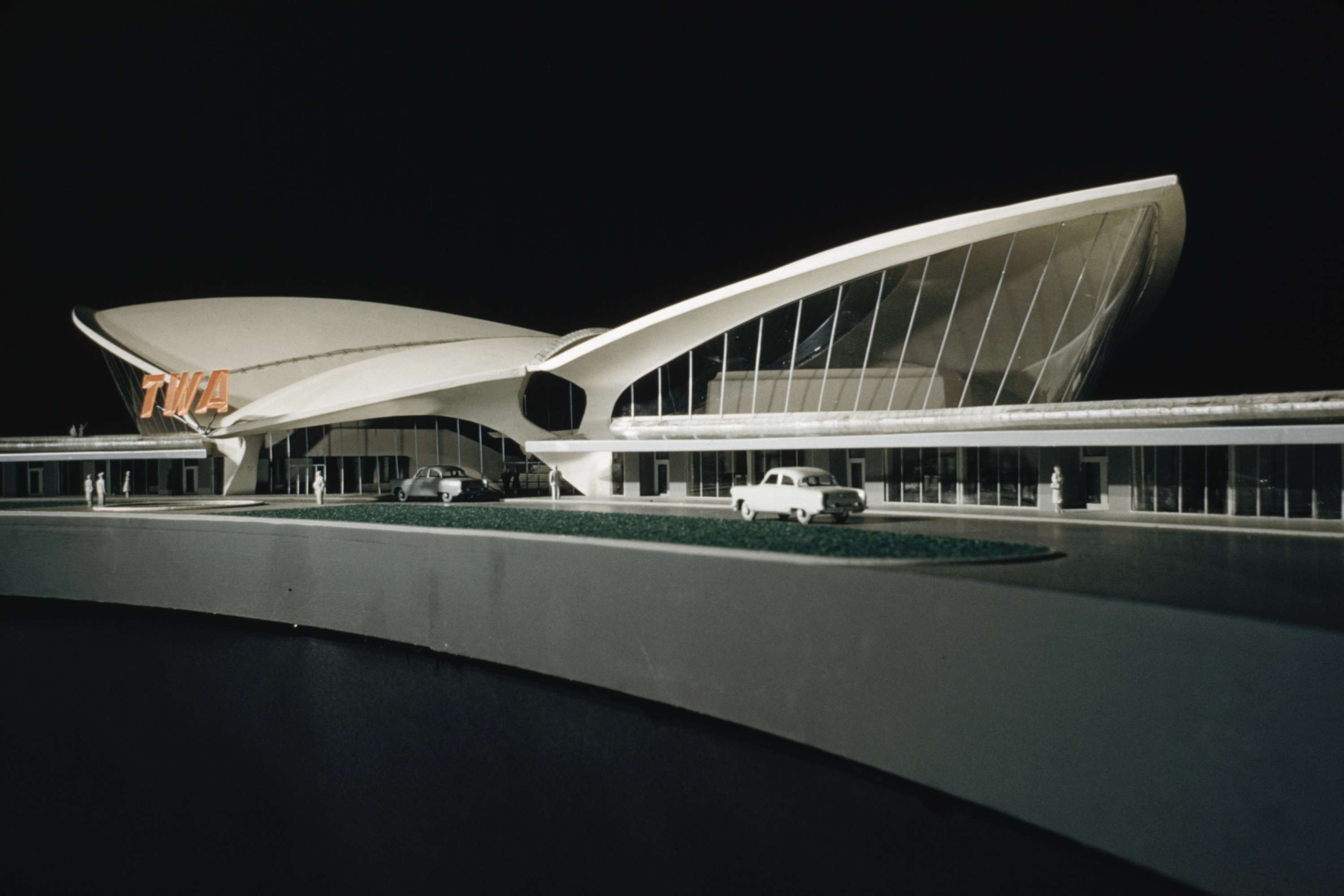
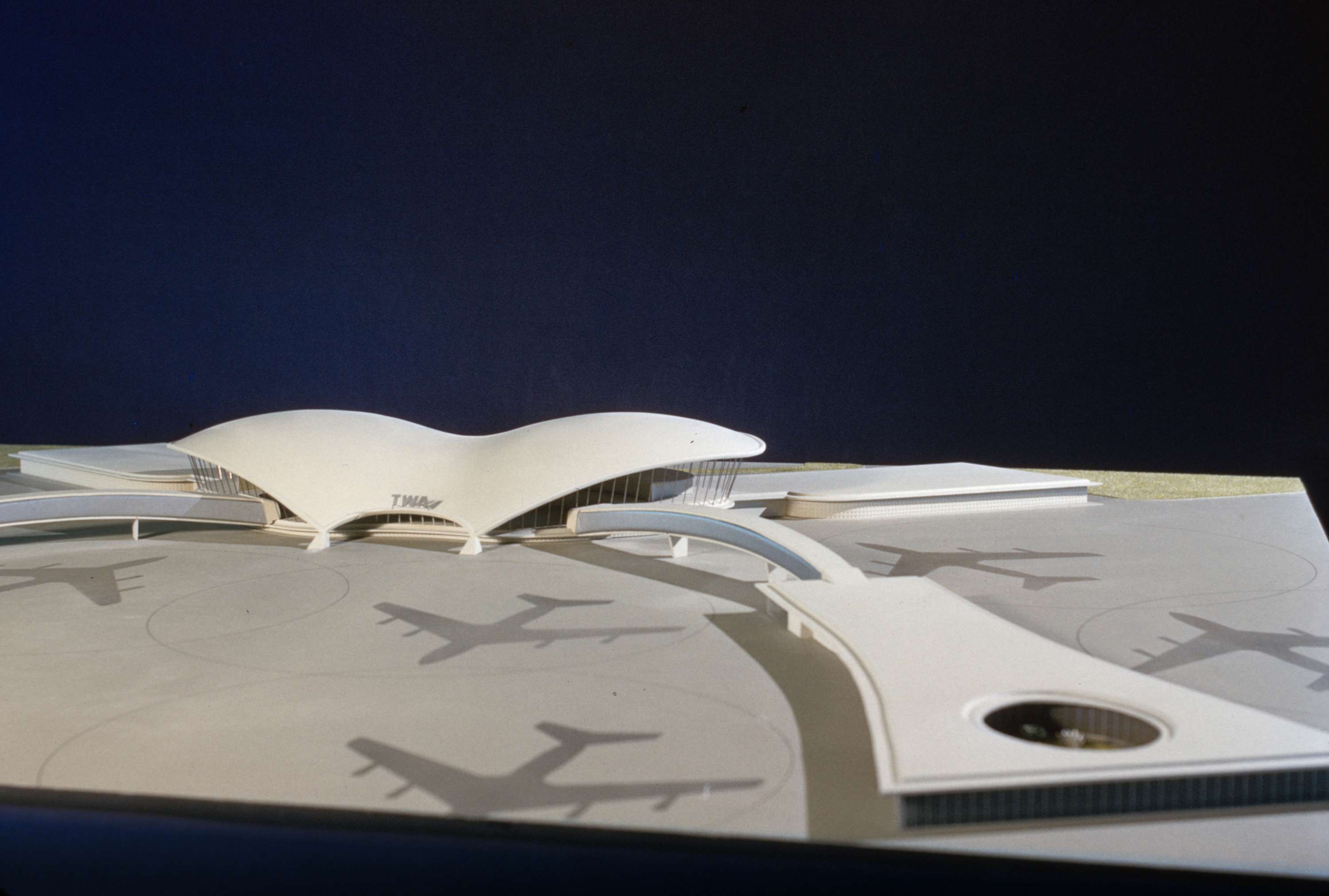
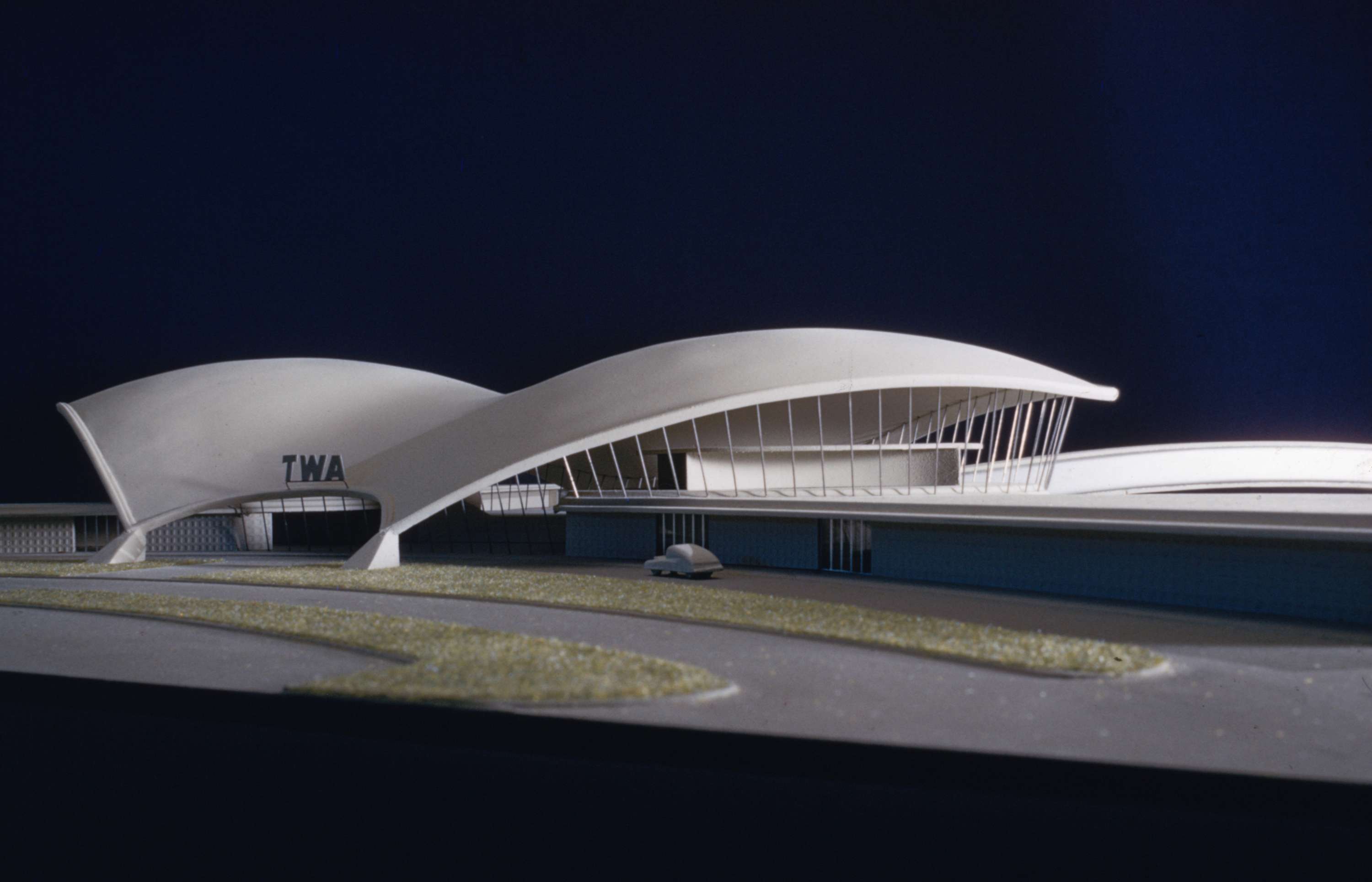

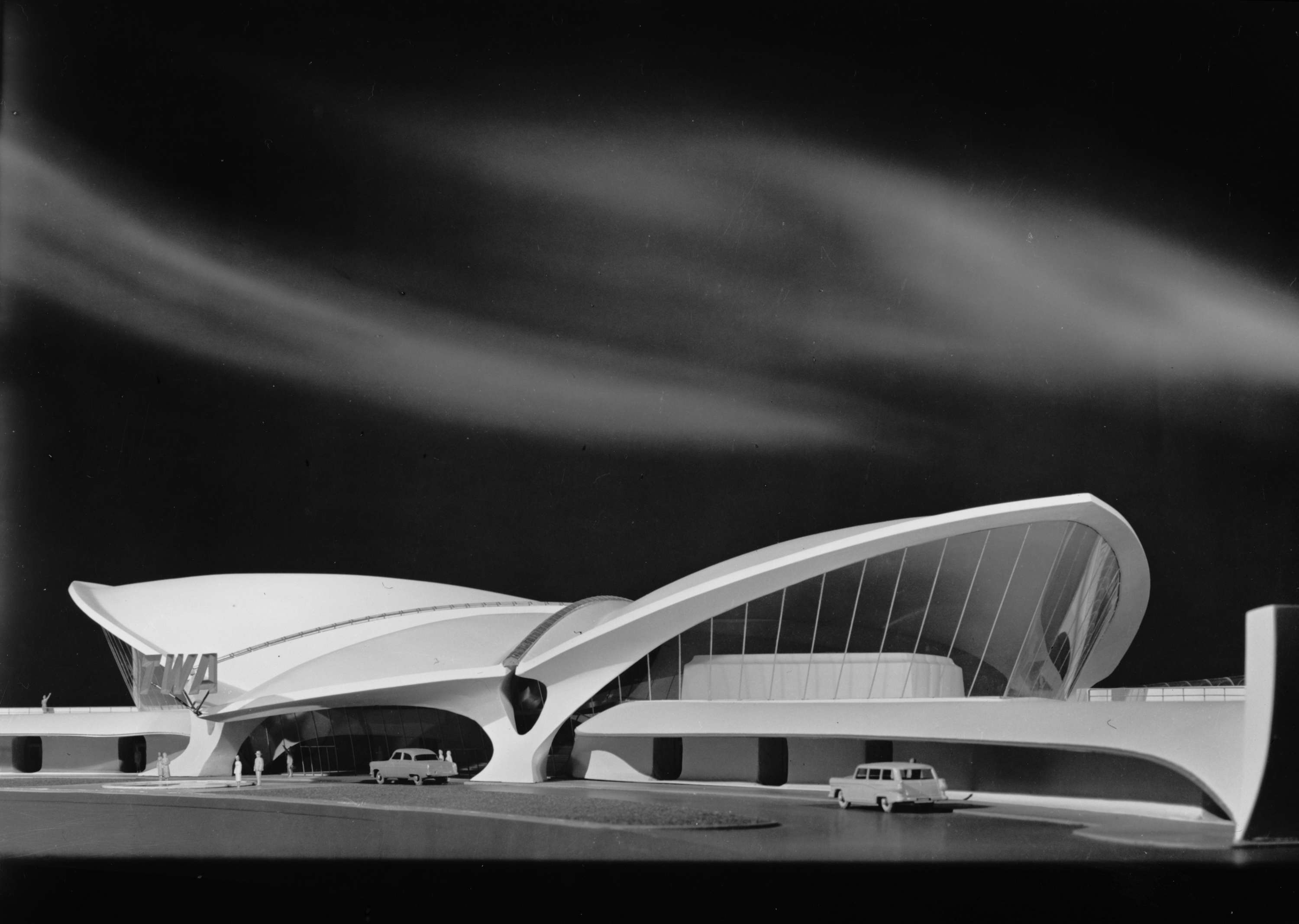
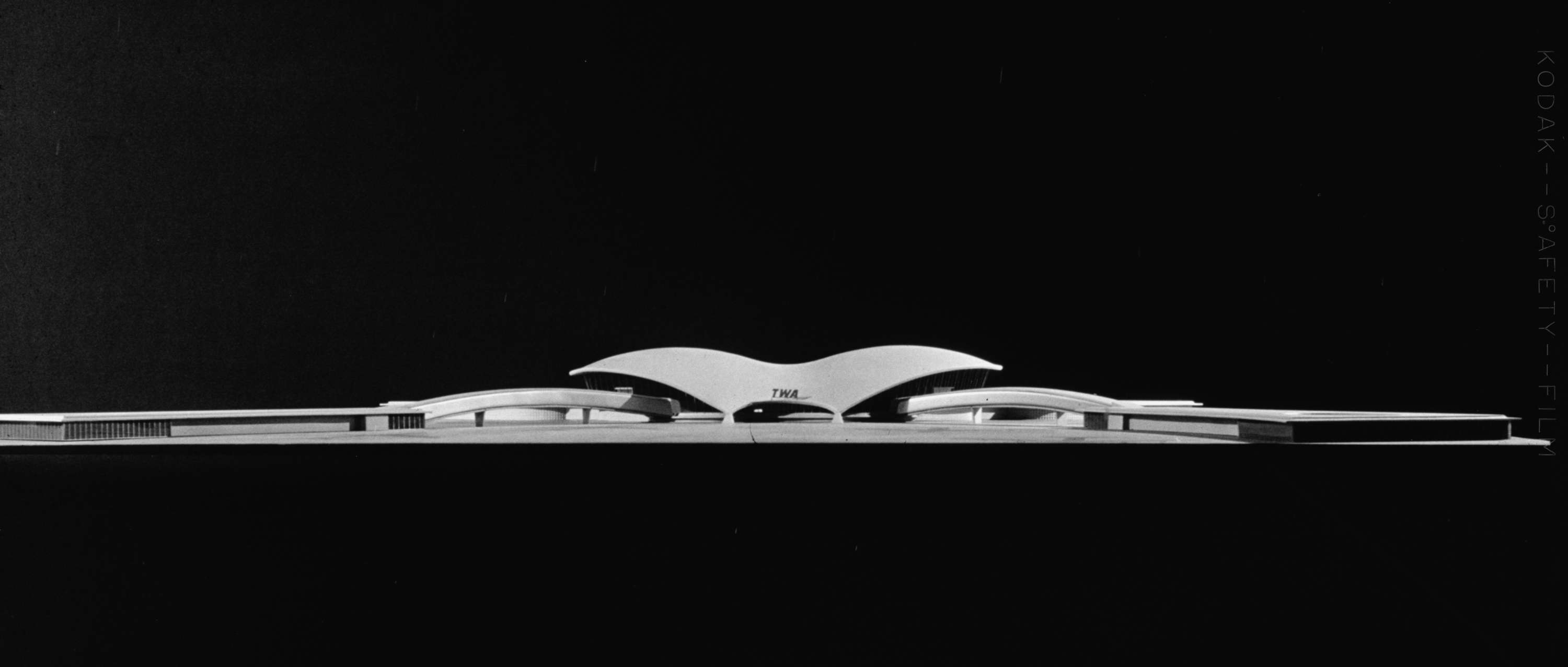
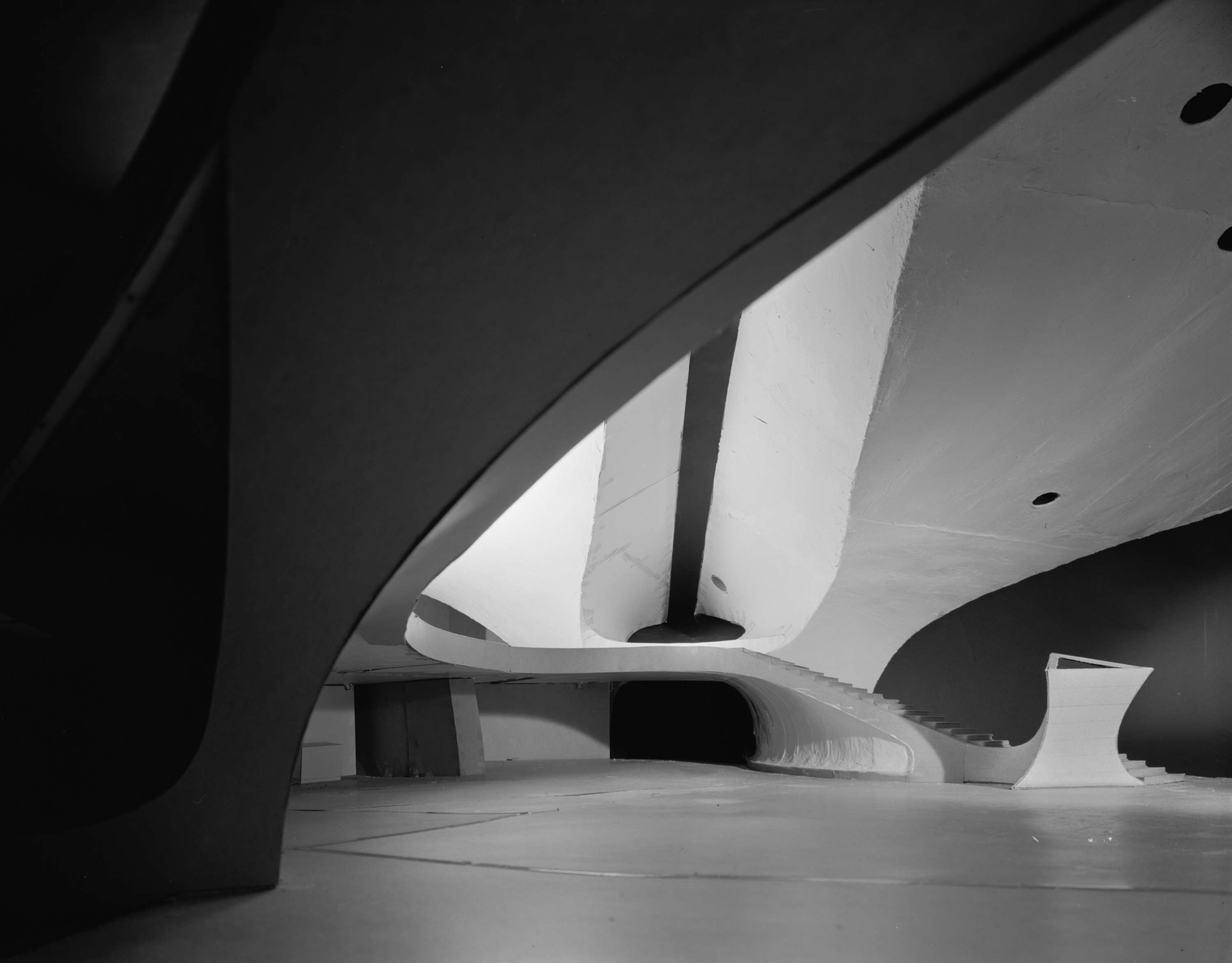
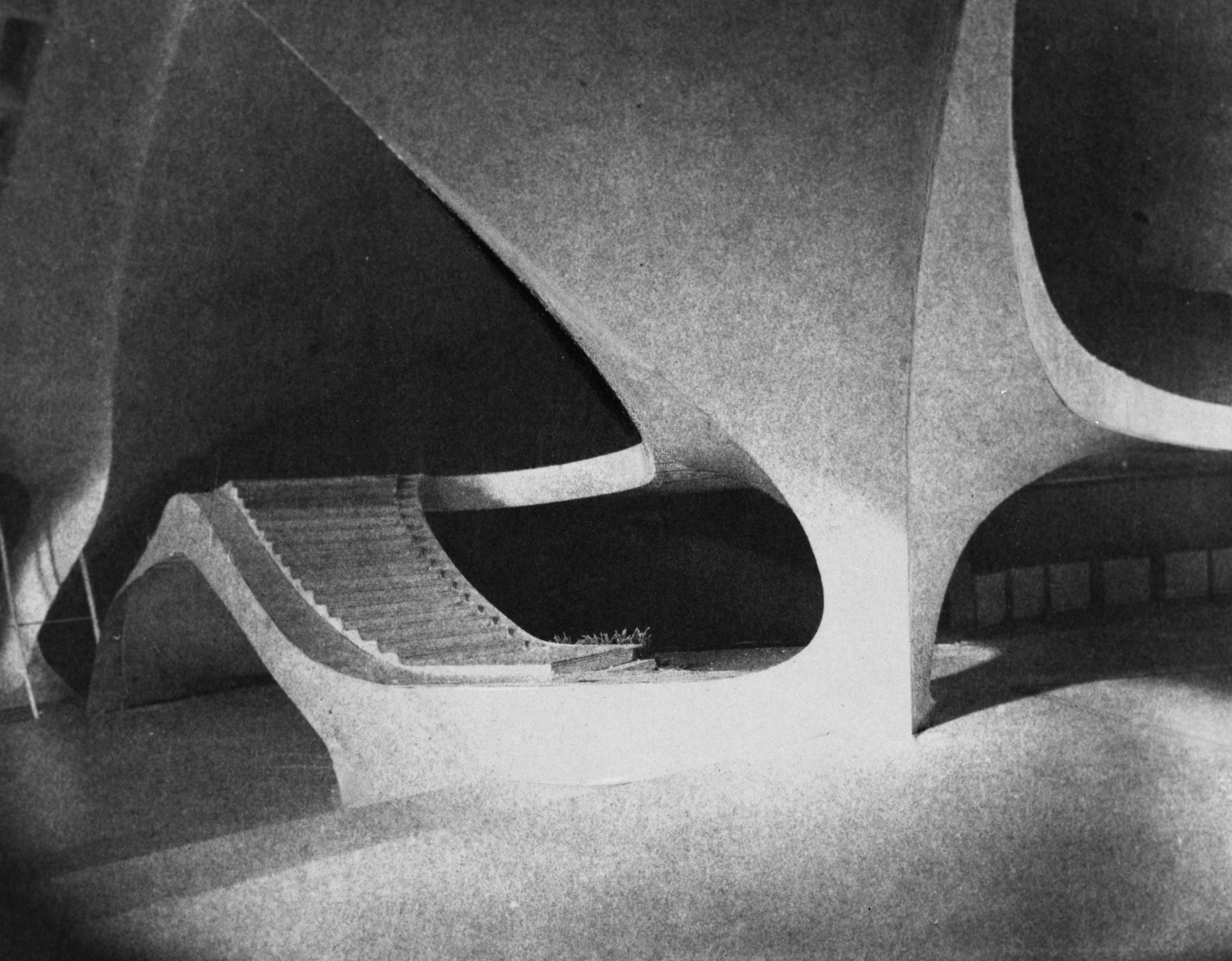
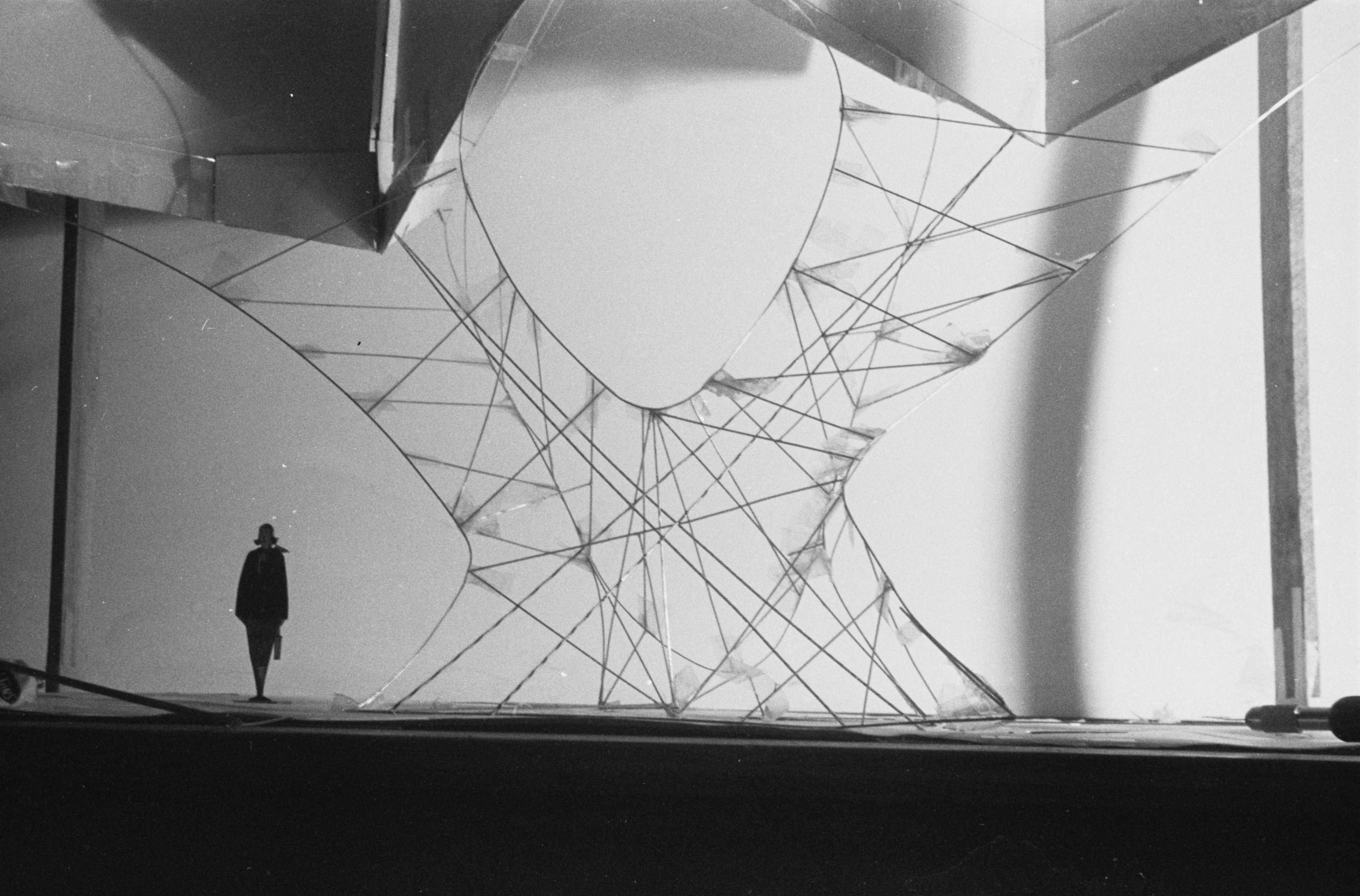
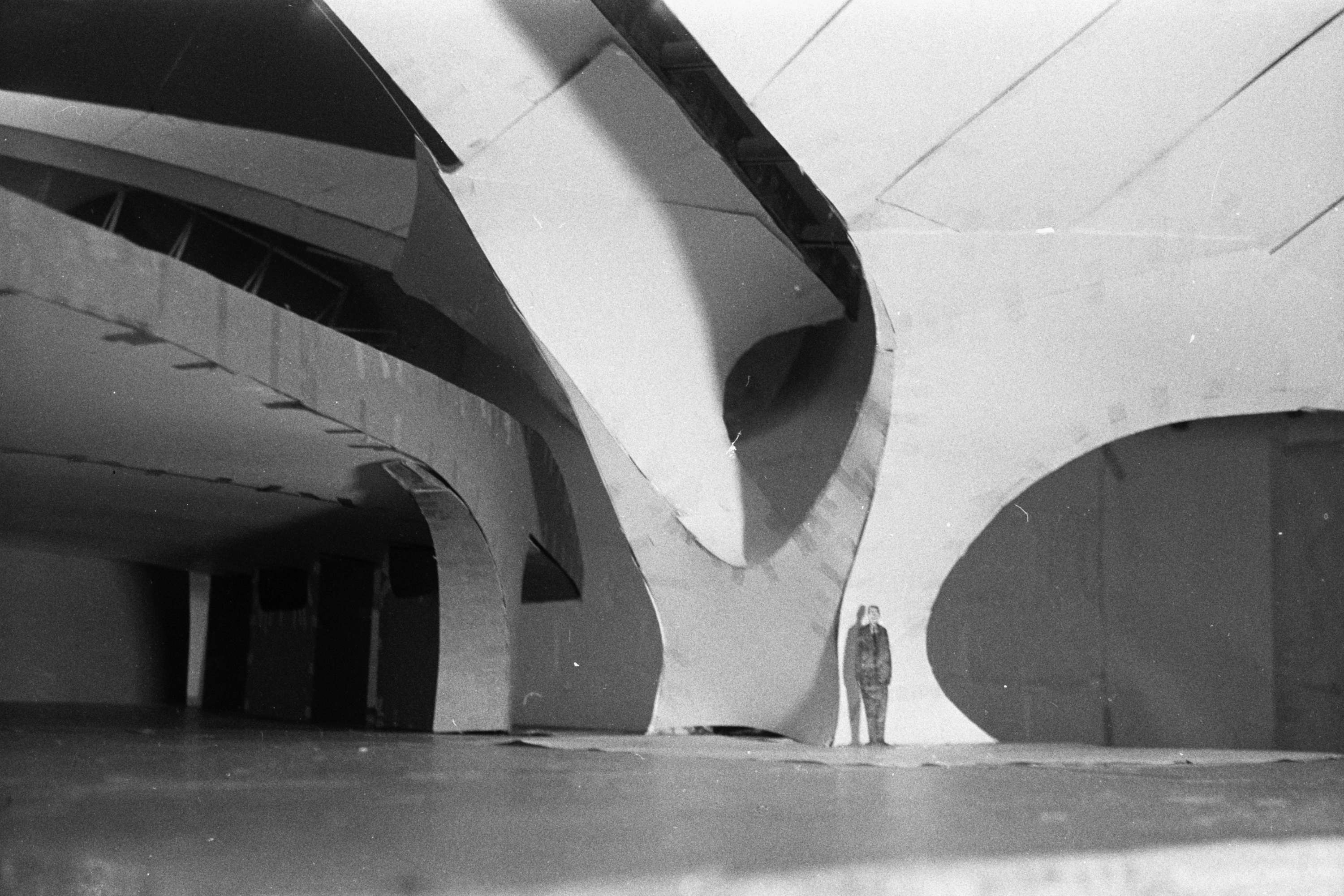
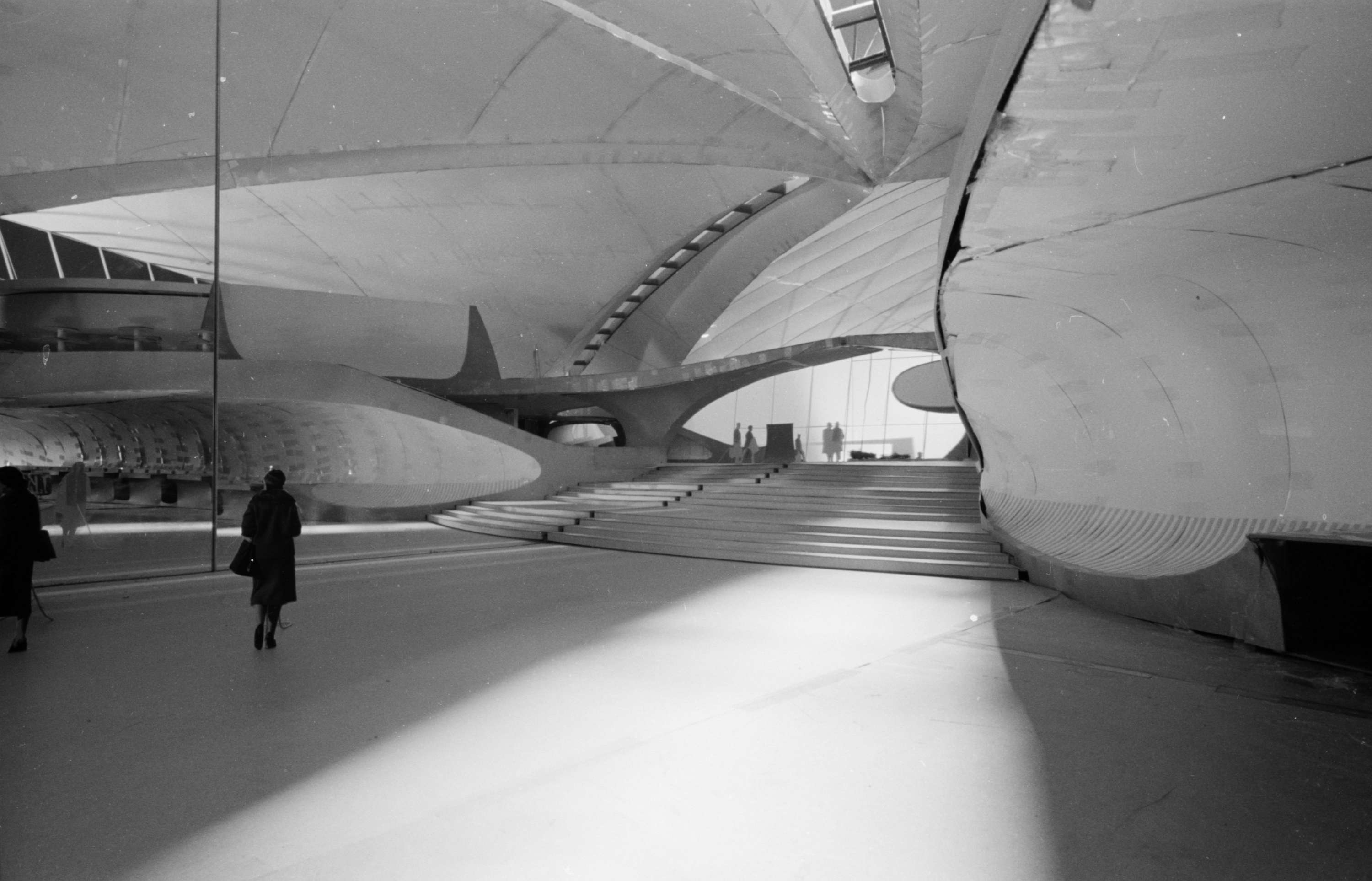
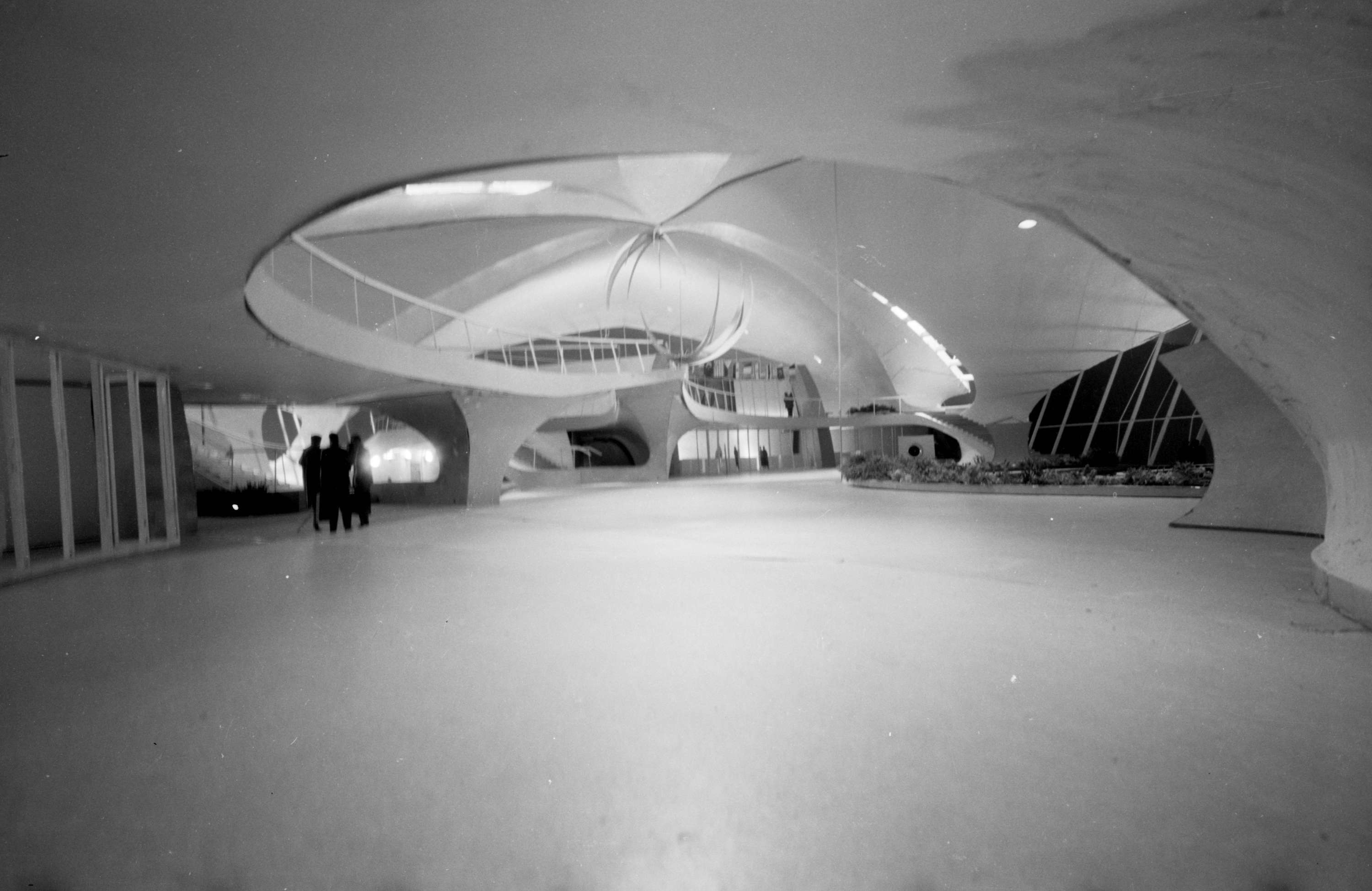
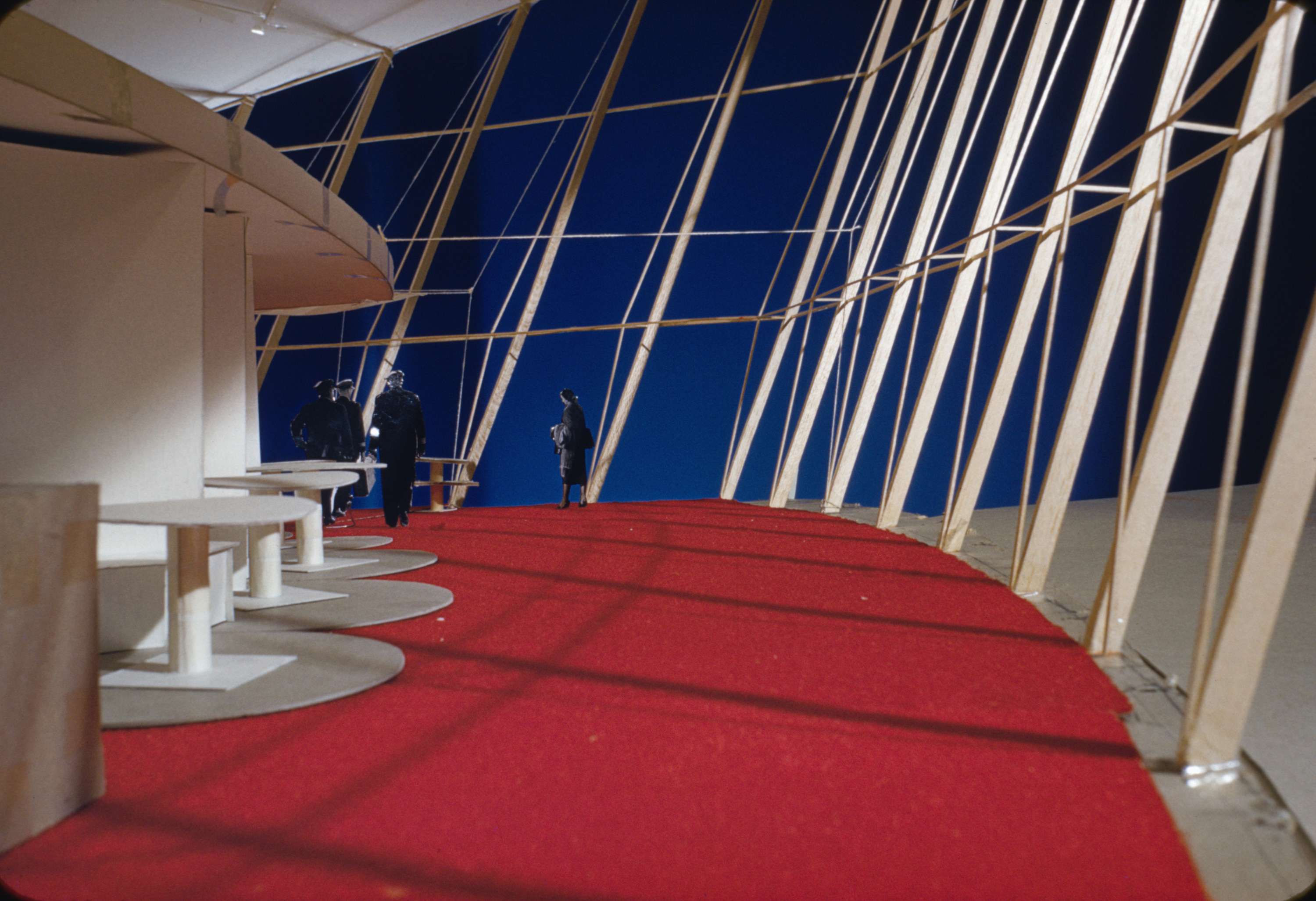
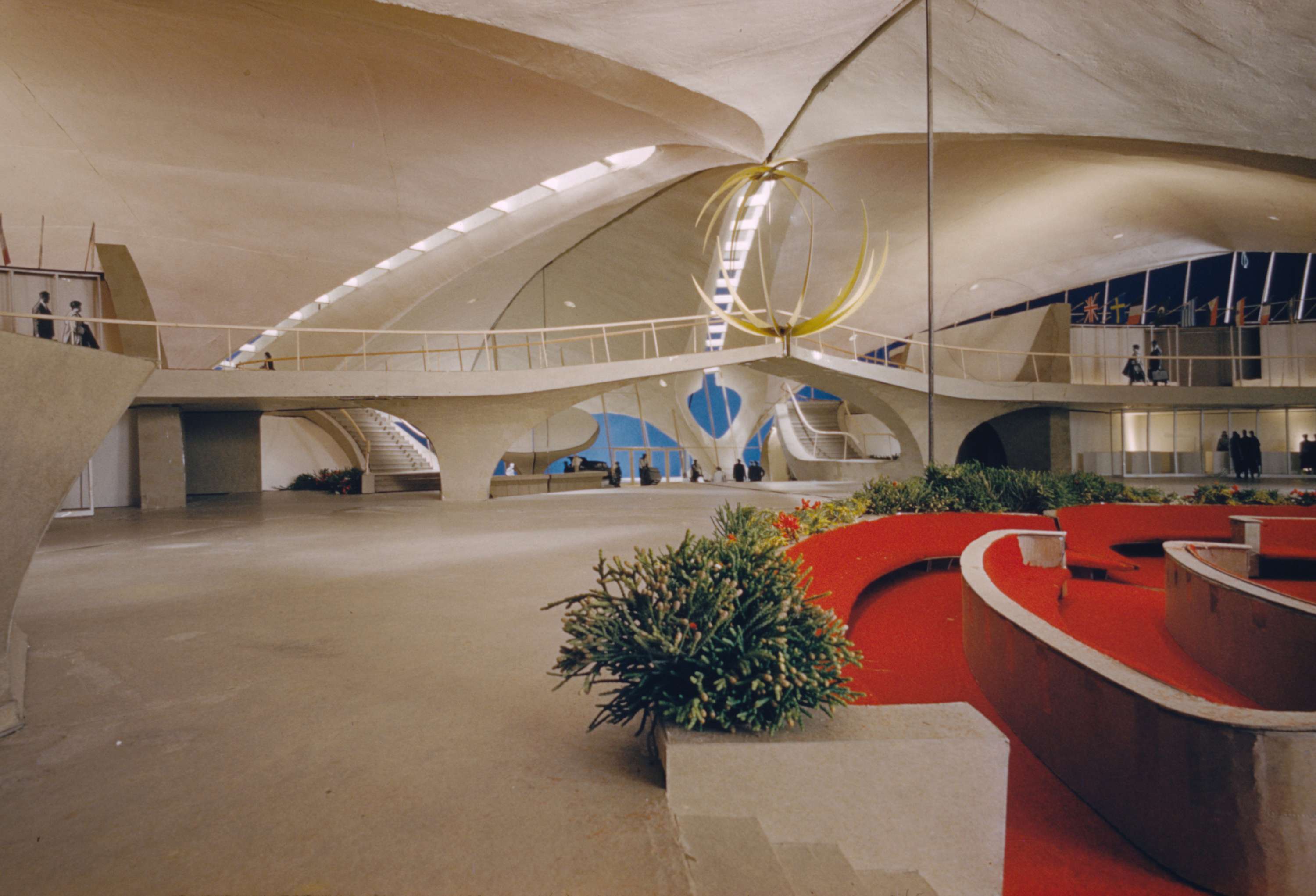
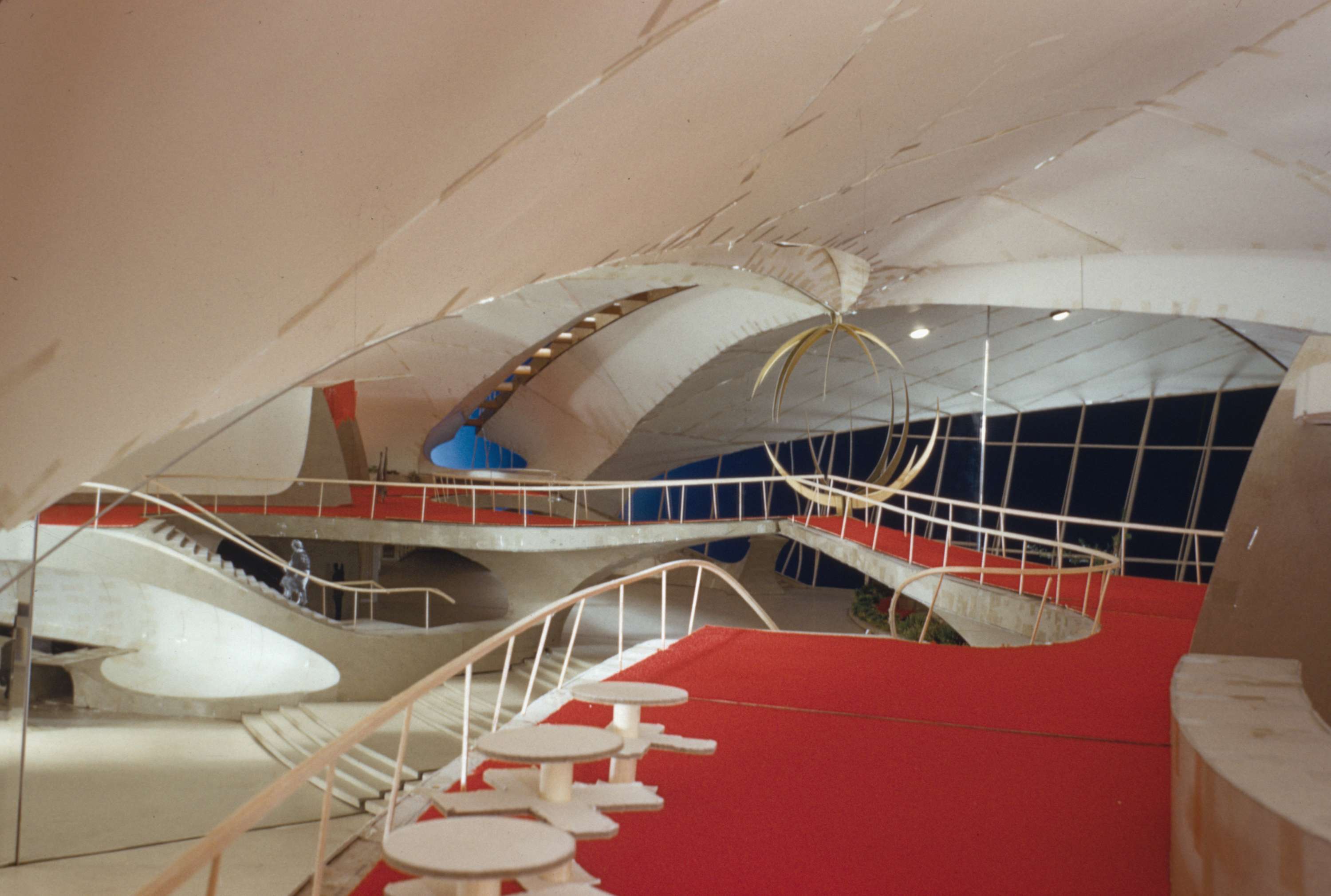
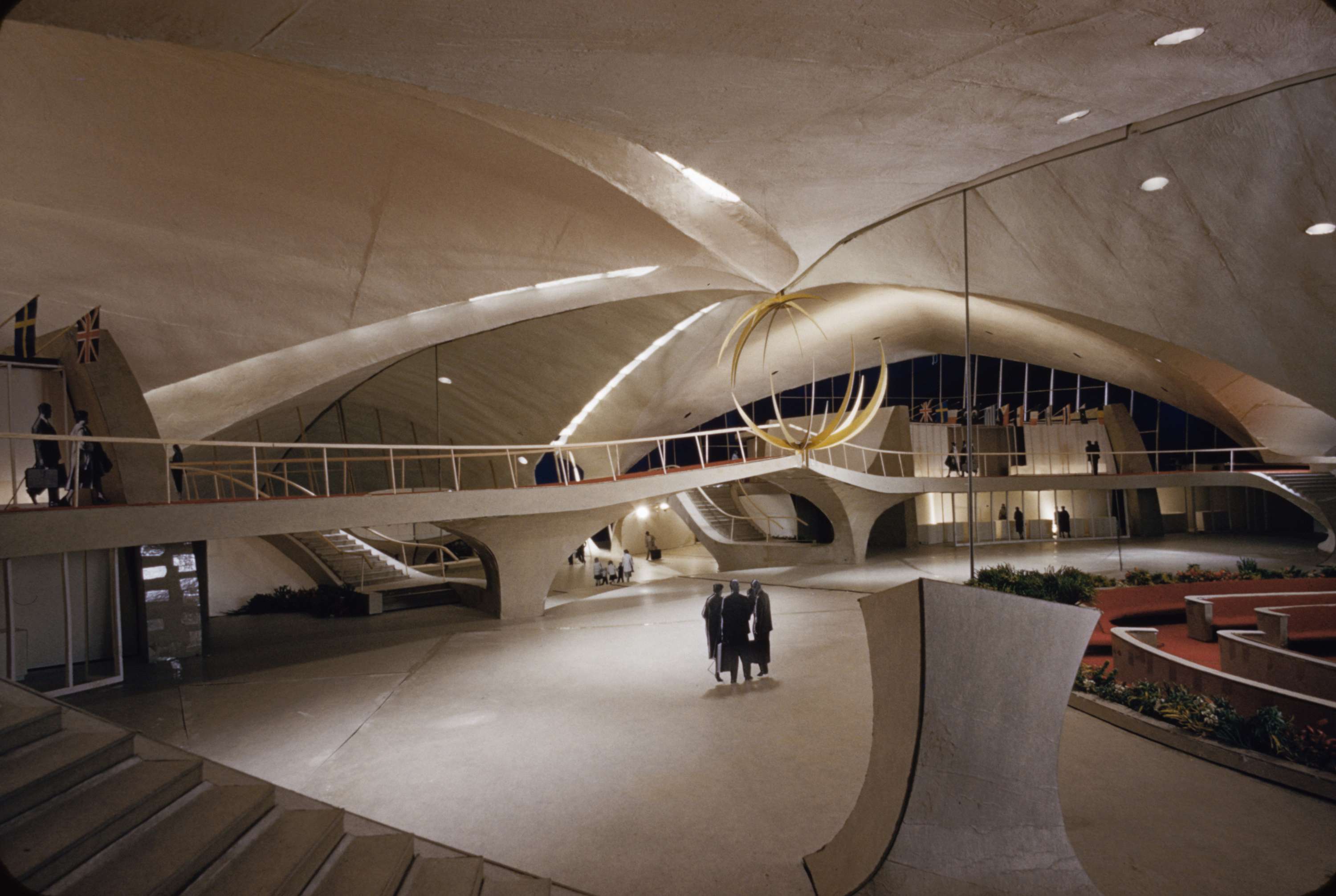
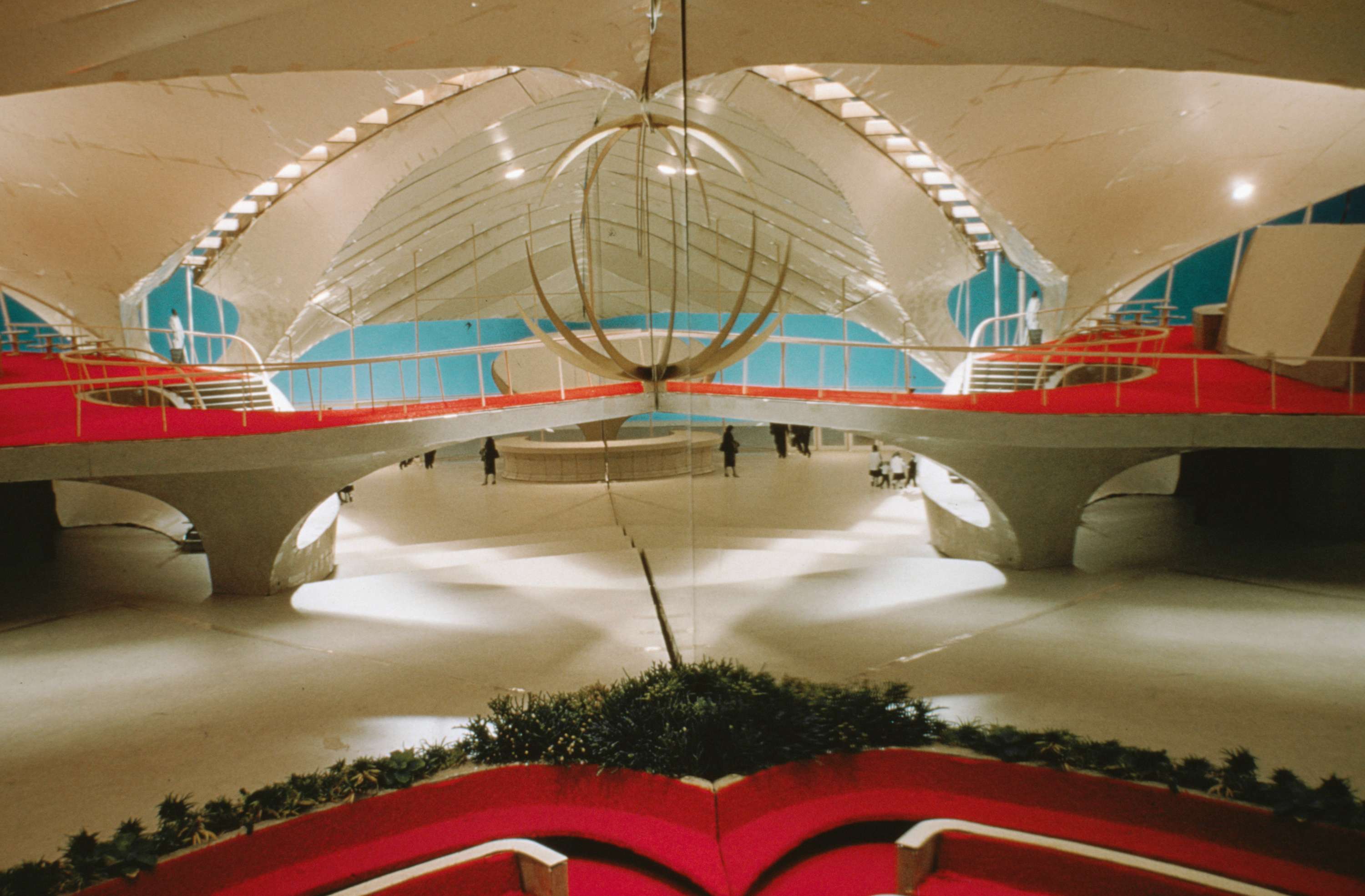
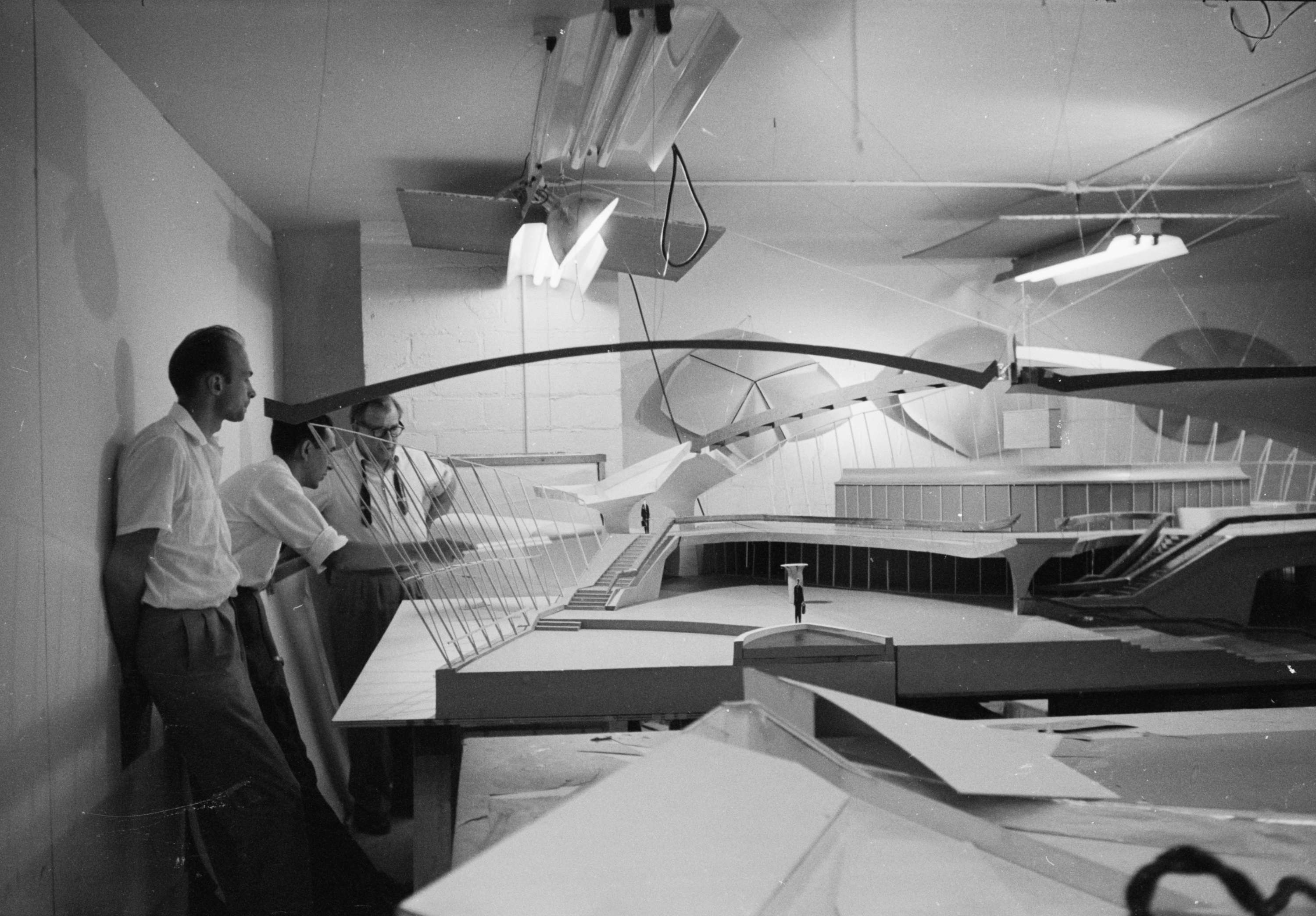
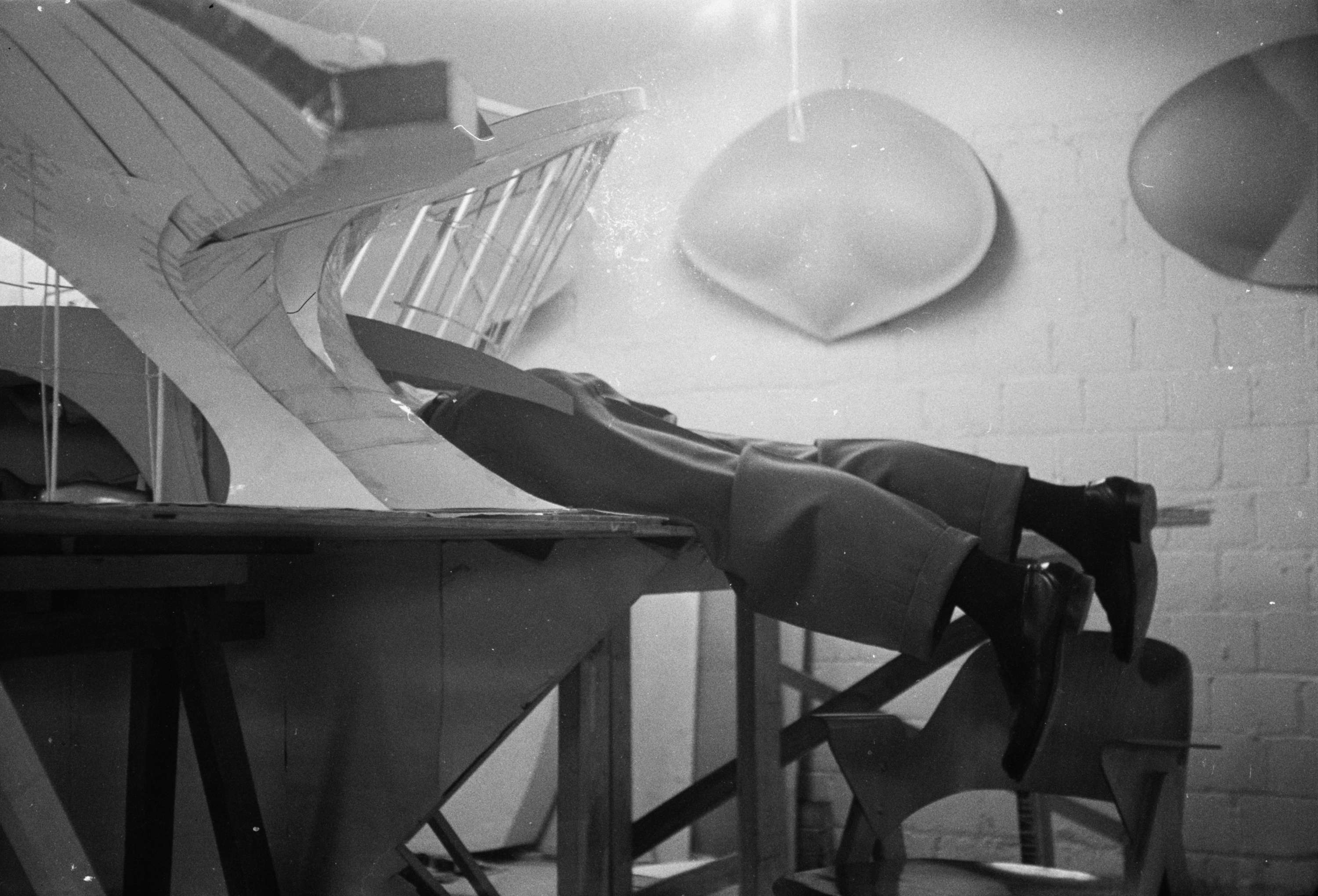
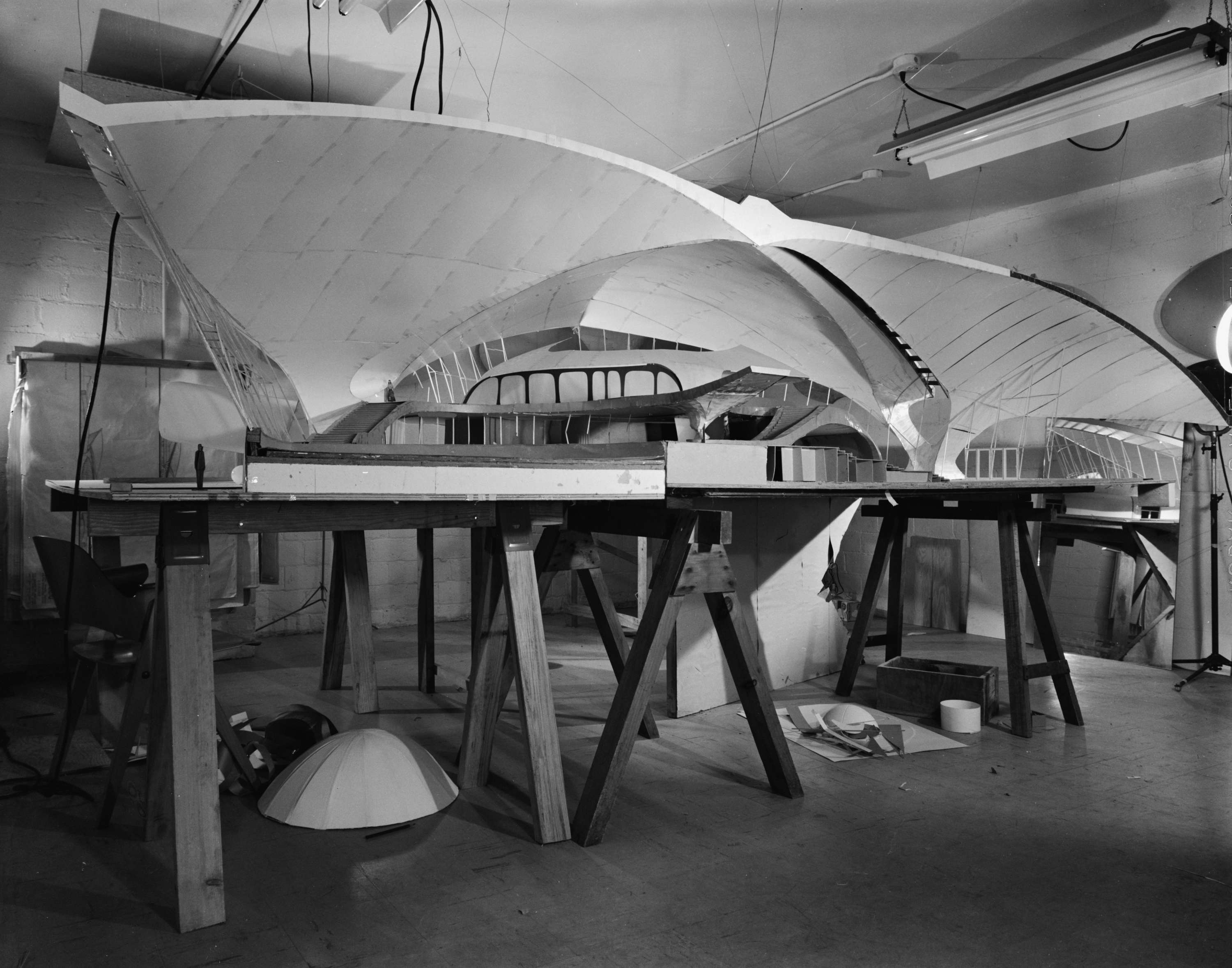
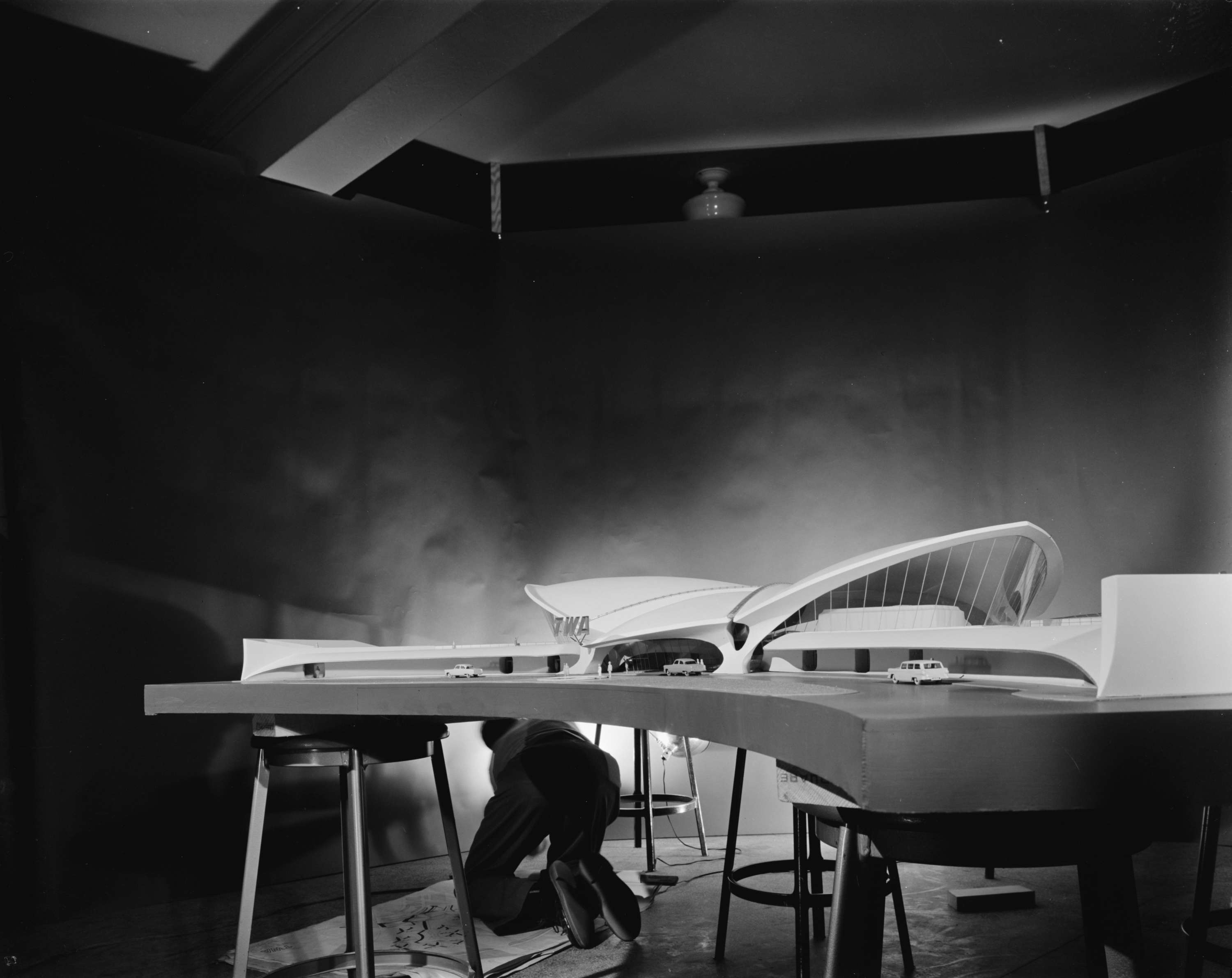
Type: Aéroport, Infrastructure
Size: 17.6 acres (7.1 ha)
Text: Wikipedia
Photography: Ezra Stoller - Balthazar Korab
Publié: Juin 2017
Catégorie: Architecture